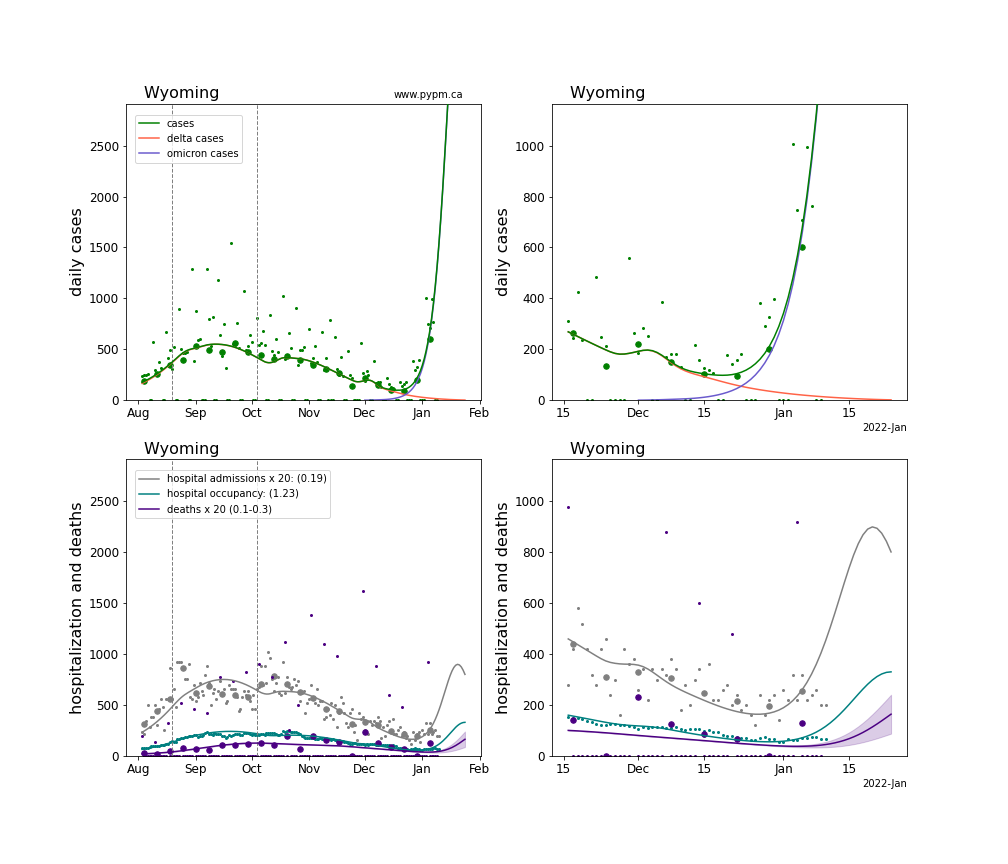January 9, 2022 Analysis of Omicron hospitalizations for US states
The characteristic signature of recent rapid growth due to Omicron is visible in all US state case history data.
For some states, testing capacity limits have changed the fraction of infections that are reported as cases, making interpretation of cases much more difficult. Further complicating matters is the usual effect of holiday periods disrupting testing and reporting. Hospital admission data can be used when cases are no longer reliable.
The analysis presented here, fits multi-strain models to case data in each state and use hospital data to compare Omicron to Delta in terms of:
-
the relative severity of omicron infections (odds ratio for hospital admission) and relative
-
duration of hospital stays (ratio of mean duration)
The case and hospital data are not broken down by variant. Instead, the multi-strain model fit uses the characteristic signature of rapidly growing cases to describe the transition from Delta to Omicron cases, and parameters for the relative severity and duration are fit for each state.
Using all state data, the mean severity is 0.38 with a standard deviation of 0.14, indicating that Omicron infections are less severe than Delta infections. The mean ratio of durations is 1.1 with a standard deviation of 0.3, indicating that the duration of treatment does not appear to be significantly shorter for Omicron hospitalizations.
Some states appear to have reached peak hospitalization, while most are several weeks away from that point.
Individual state projections
For this analysis, the case and death data source is the New York Times, since it has has more regular updates and fewer irregularities than the JHU data.
The plots for each state below show the case, hospitalization, and deaths data since August 2021 (left) and since November 15 2021 (right). The maximum vertical axis values for cases are 500/100k (left) and 200/100k (right). Daily hospital admissions and deaths are scaled up by 20 to be able to see them on a single plot.
The infection model is defined by fitting the model to the case data, and the hospitalization and deaths models are derived from the infection model.
The Omicron variant is assumed to have a much larger susceptible population, due to its ability to evade immunity (natural and vaccination immunity). For this study, those immunized against earlier strains only have 20% effective immunity against omicron.
The Omicron variant is assumed to produce many more infections that go undetected as cases. The reporting fraction of omicron infections is assumed to be 0.4 times that of Delta infections. This has the effect of reducing peak infection and hospitalization rates.
The green points are the daily cases, the grey points the daily hospitalizations, the teal points are hospital occupancy, and the indigo points are the daily deaths. The larger circles are weekly averages to help guide the eye.
The case data are used to define the periods for which transmission rate appears to be constant. The vertical lines show where the transmission rate is changed. If the susceptibe fraction is constant (immunity not changing quickly), constant transmission rates lead to steady exponential growth or decline. With immunity growing, the curves bend downwards due to the herd effect. Interpretting the growth of omicron with changing delta rates growth rates leads to additional uncertainty in the interpretations.
The curves are the model expectations for cases, hospitalizations, and deaths, and all three are determined from the case data. The severity is estimated from the hospital admission data, and its value is shown in the legend. The hospital durations (mean Omicron duration and mean Delta duration) are estimated from the hospital occupancy data, and the ratio (Omicron divided by Delta) is shown in the legend. Omicron and Delta hospital parameters can both be estimated from these data only because of the different relative prevalence by date, as indicated by the fits to the case data.
There is insufficient data to estimate the relative death rates for Omicron and Delta infections. The model curve assumes an odds-ratio of 0.2, with a band spanning the range 0.1-0.3.
Alaska
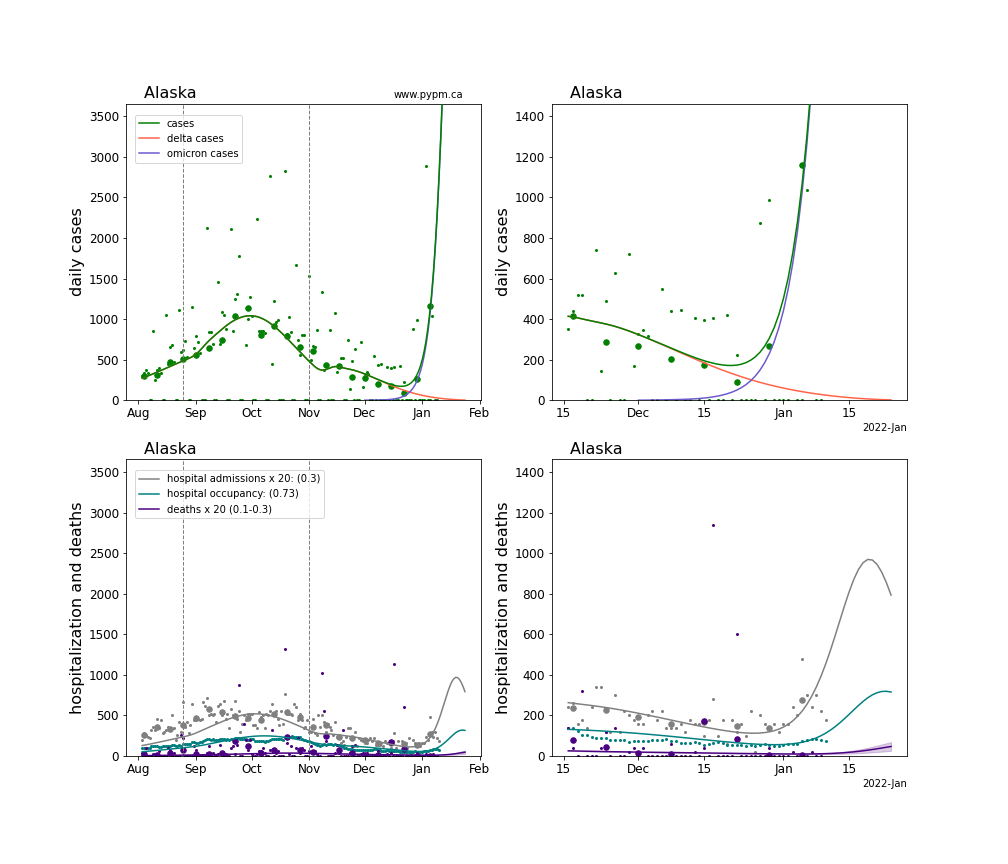
Alabama
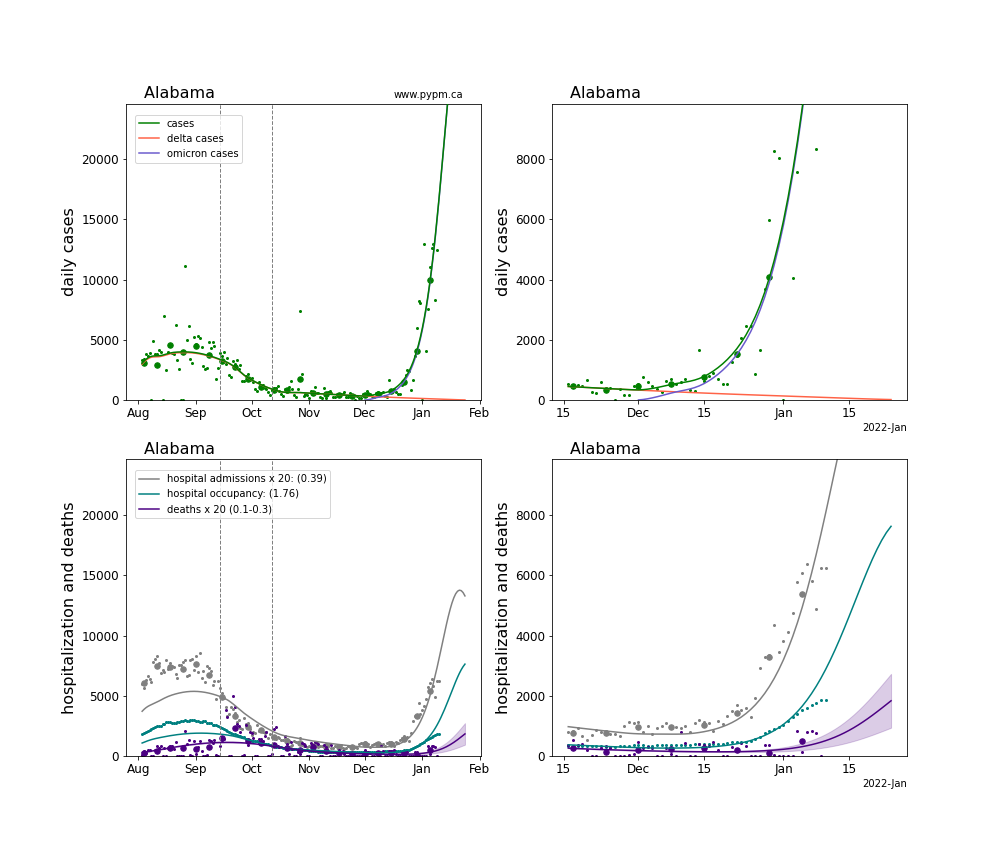
Arkansas
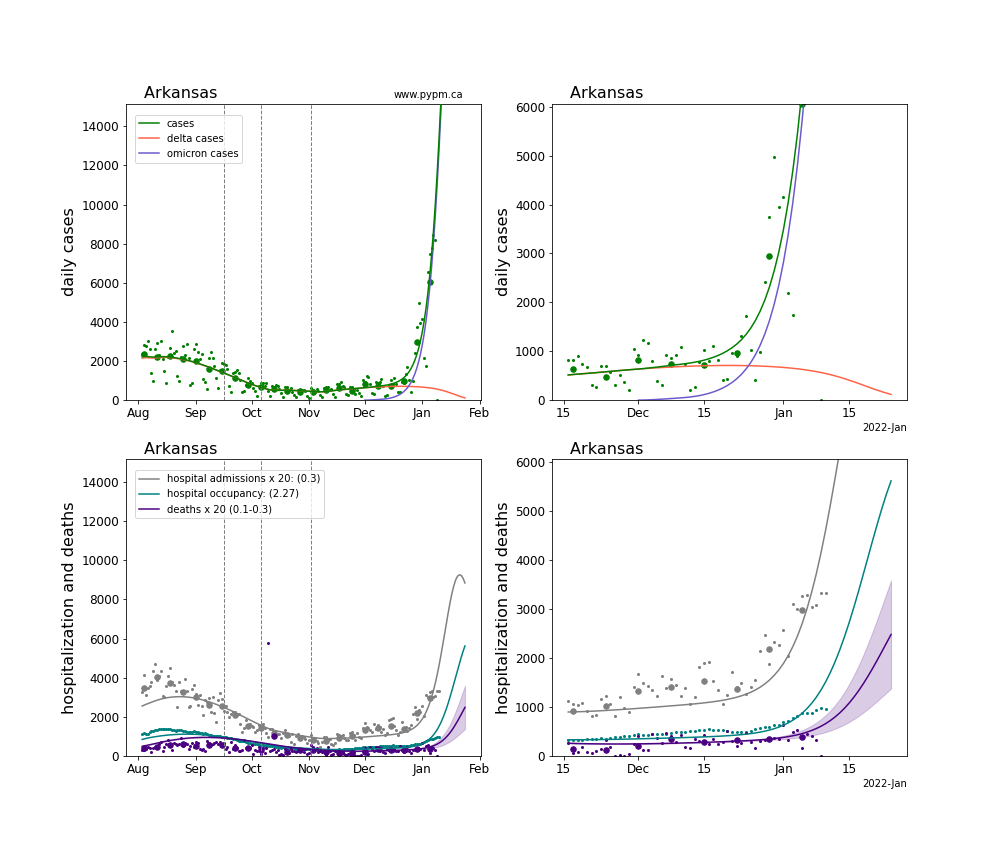
Arizona
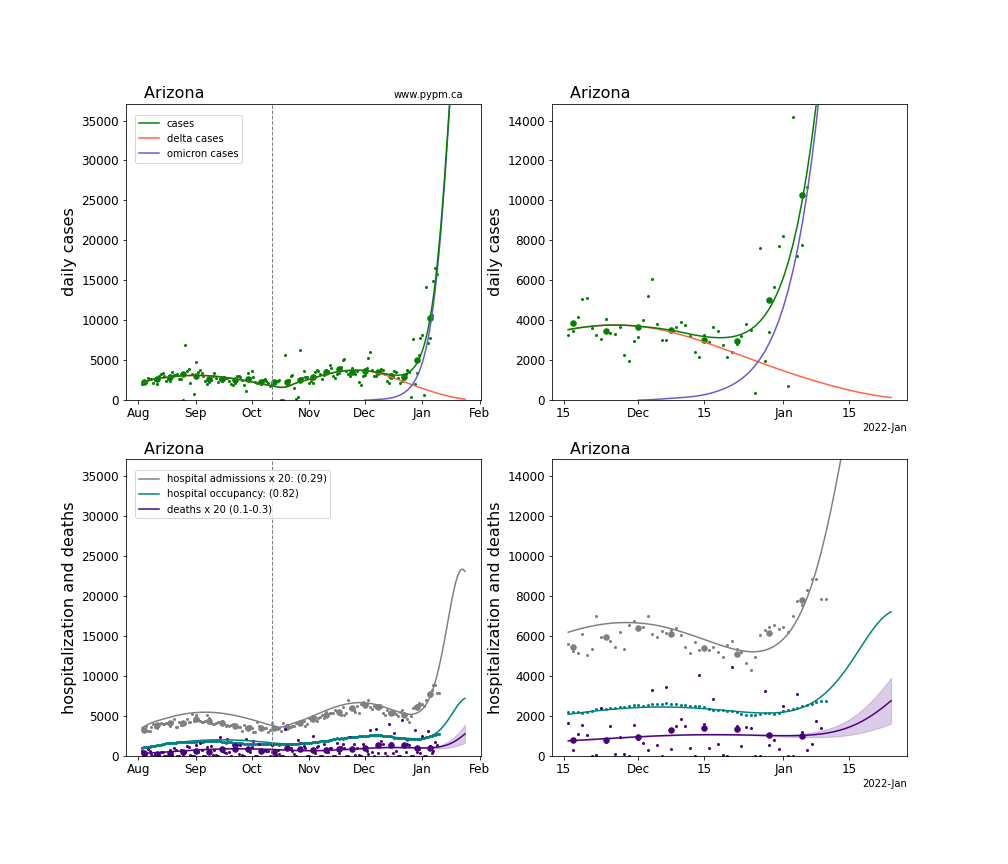
California
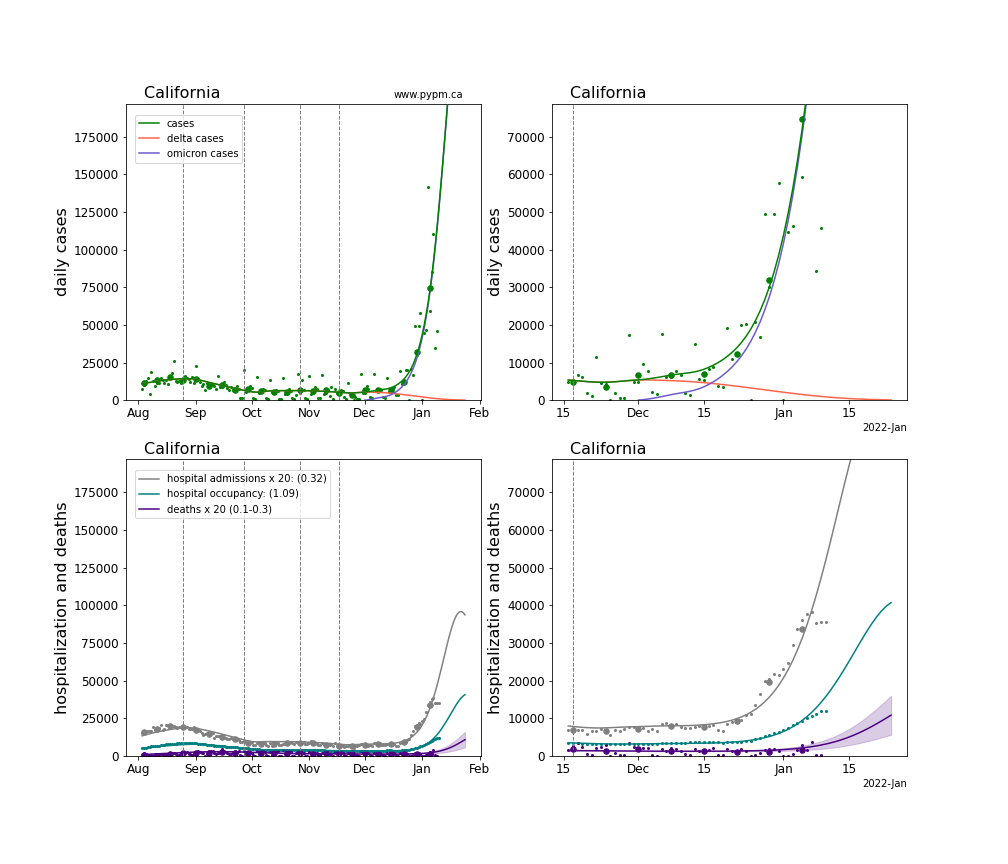
Colorado
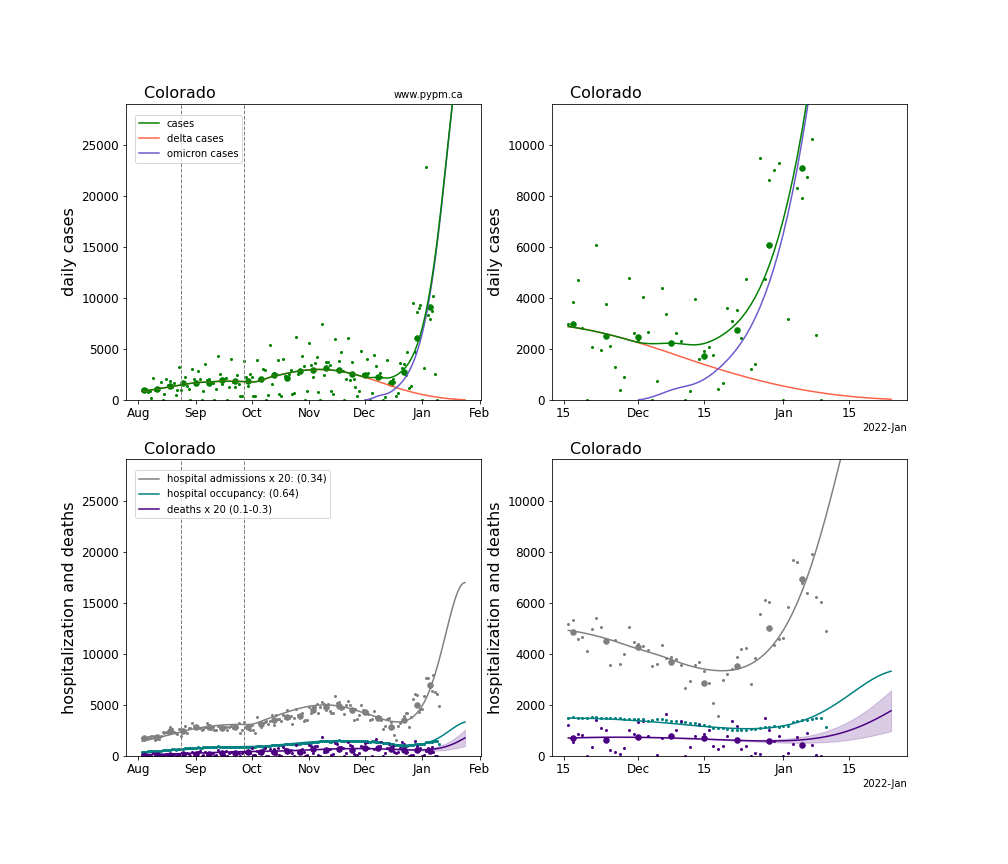
Connecticut

District Of Columbia
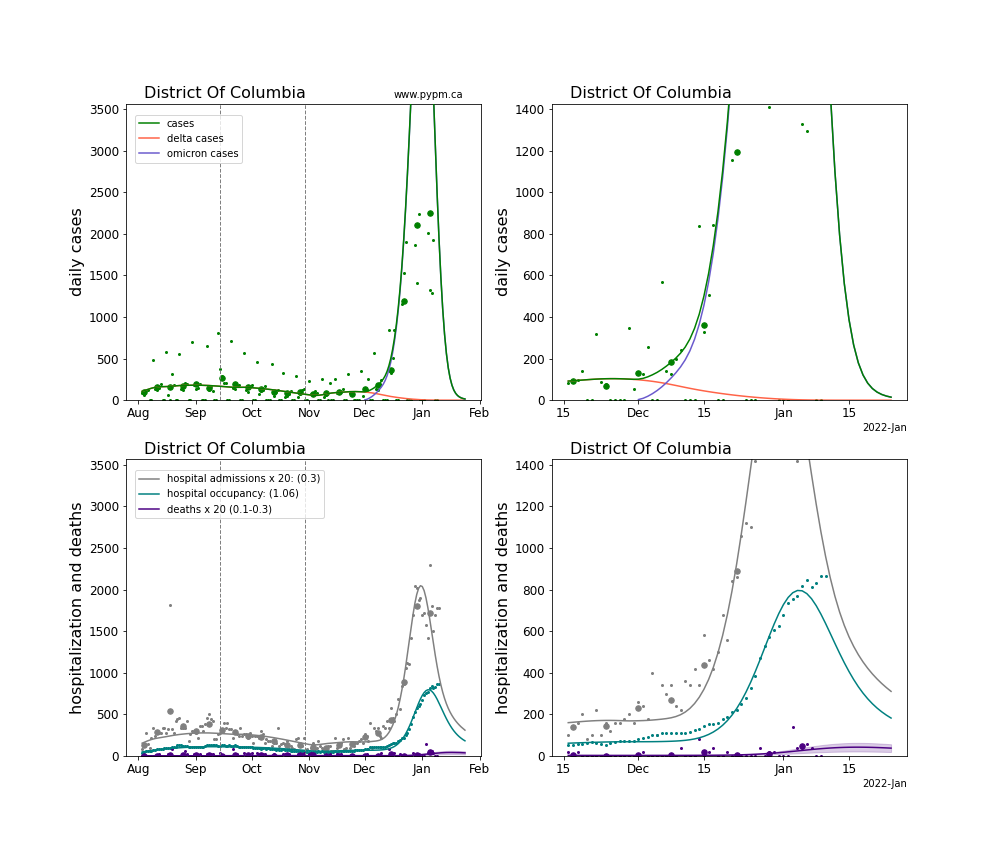
Delaware
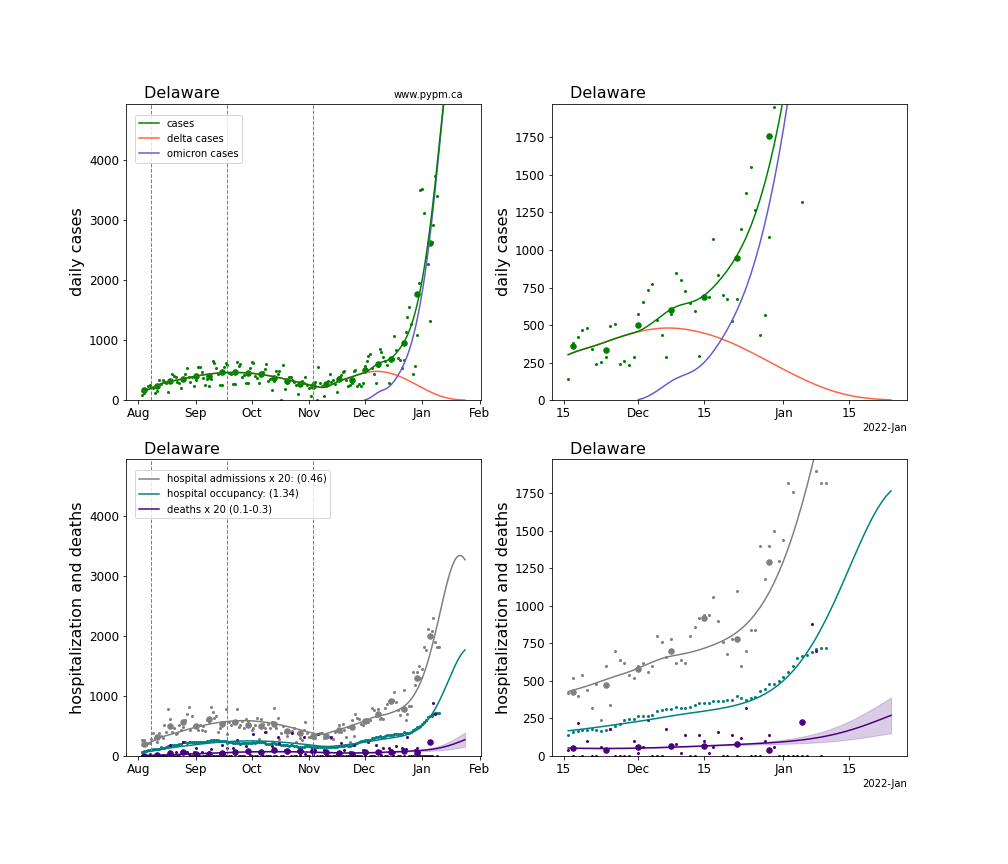
Florida
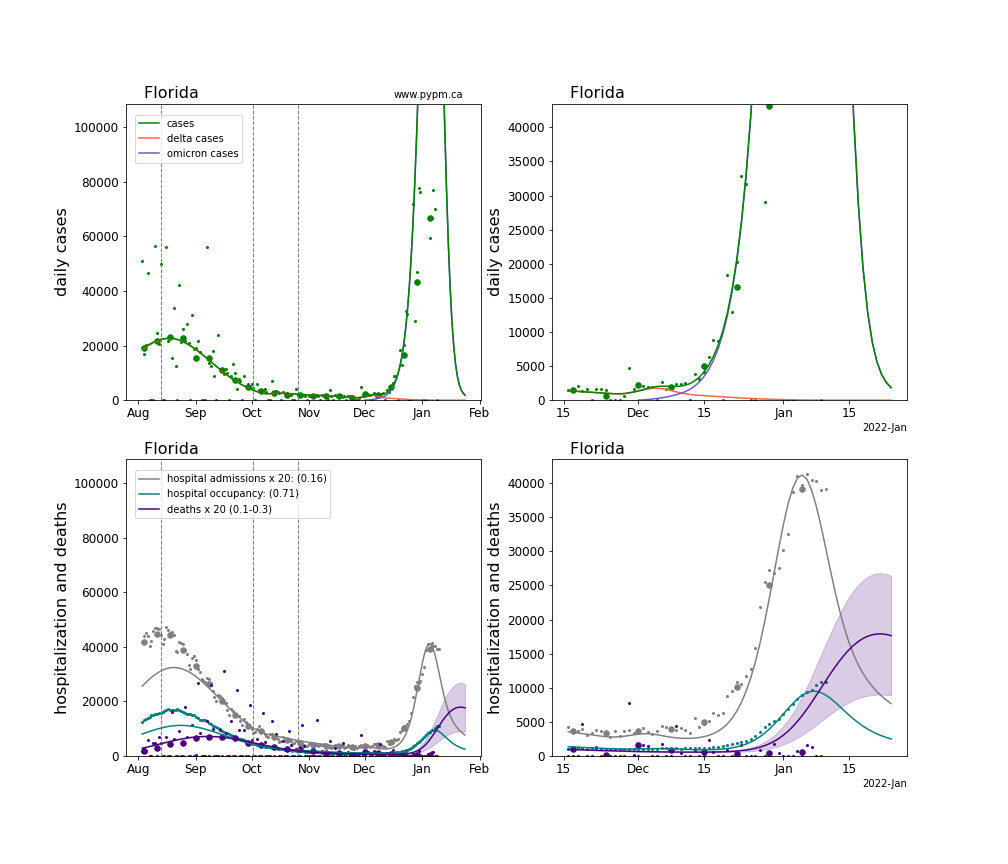
Georgia
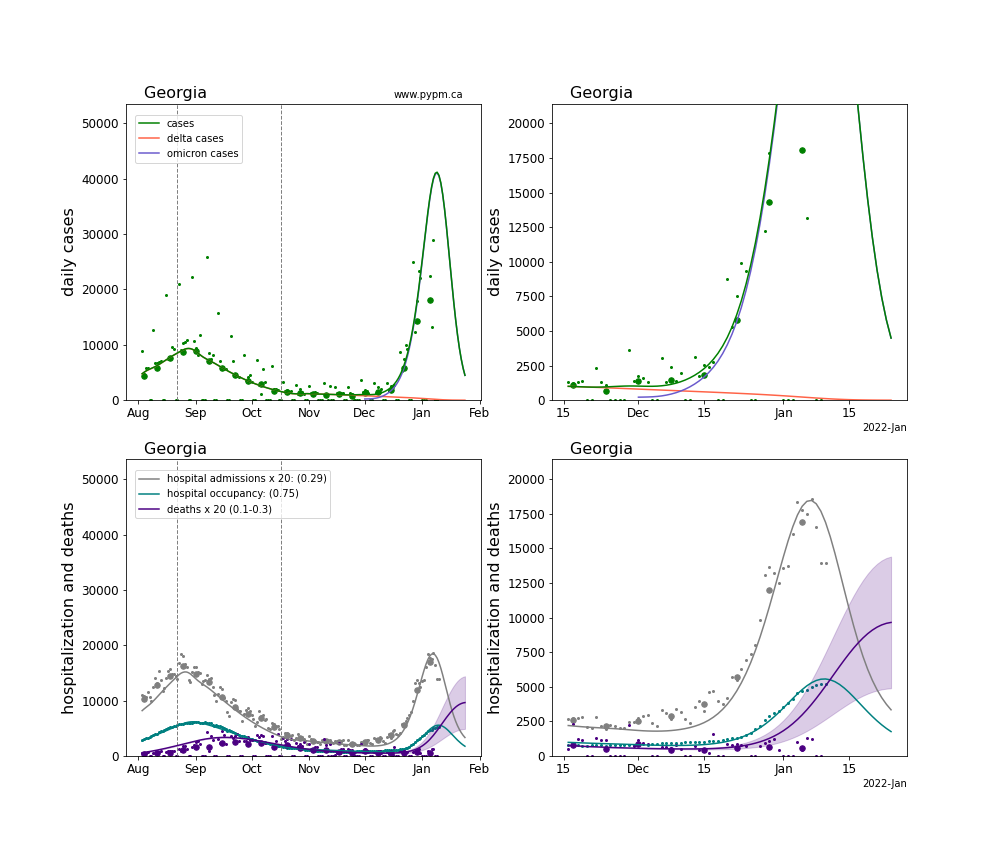
Hawaii
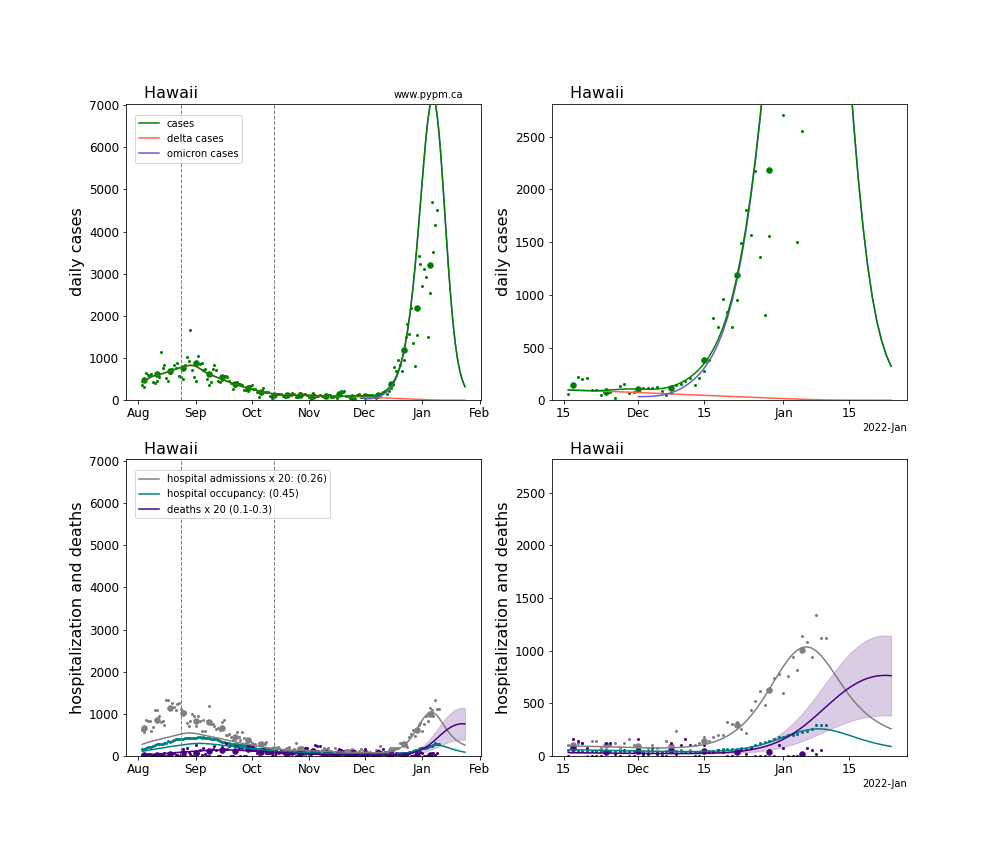
Iowa
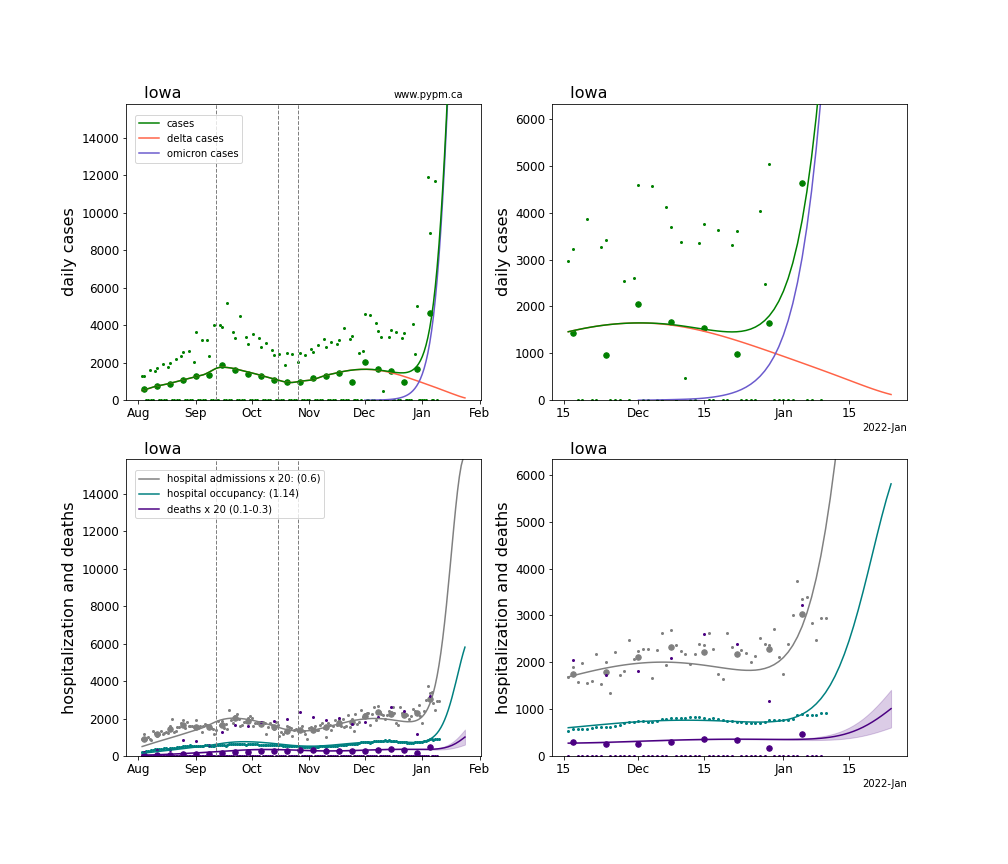
Idaho
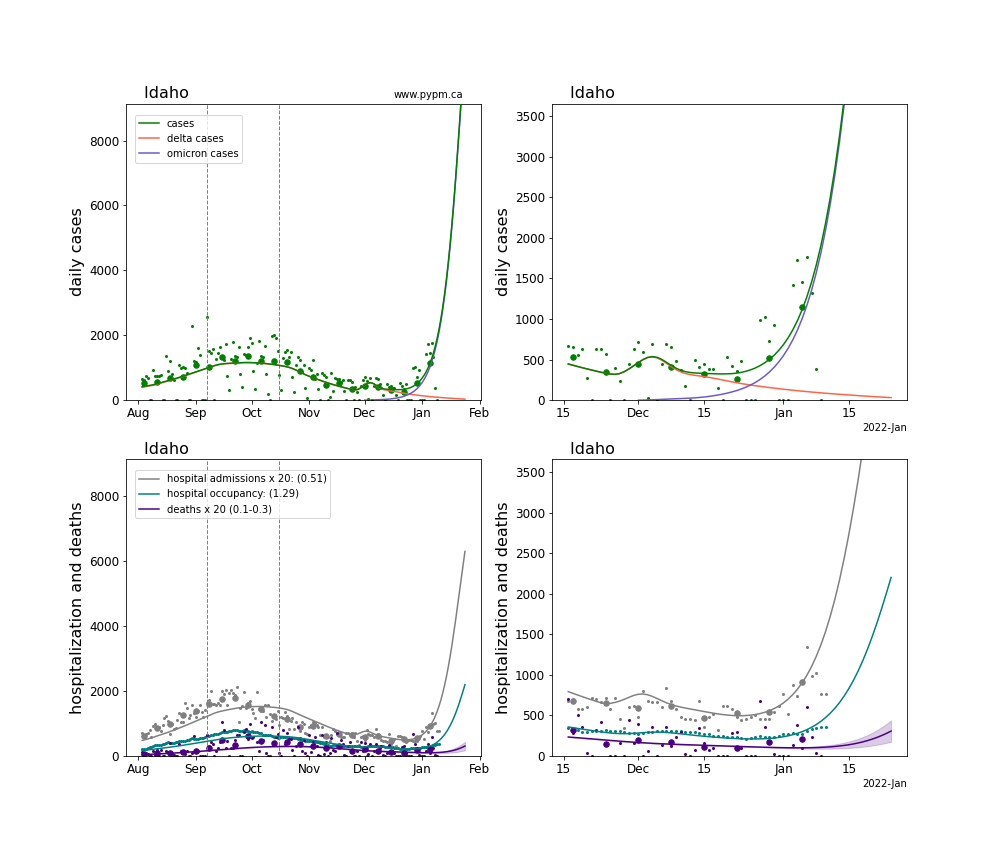
Illinois
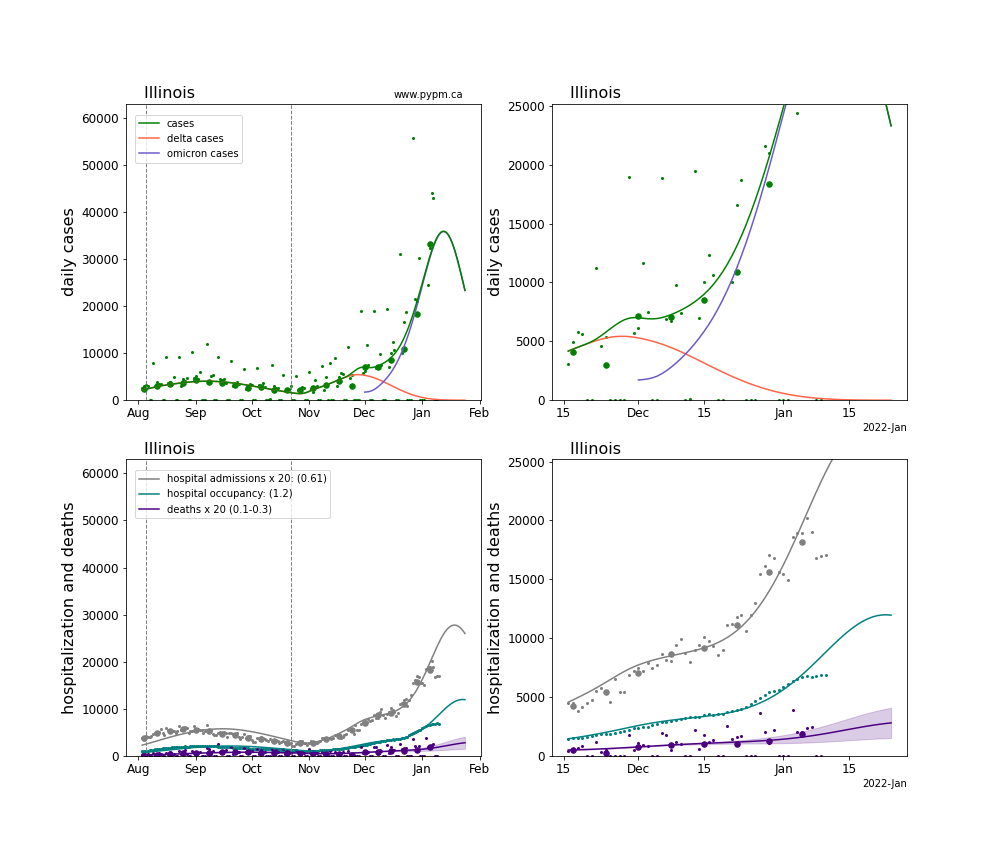
Indiana
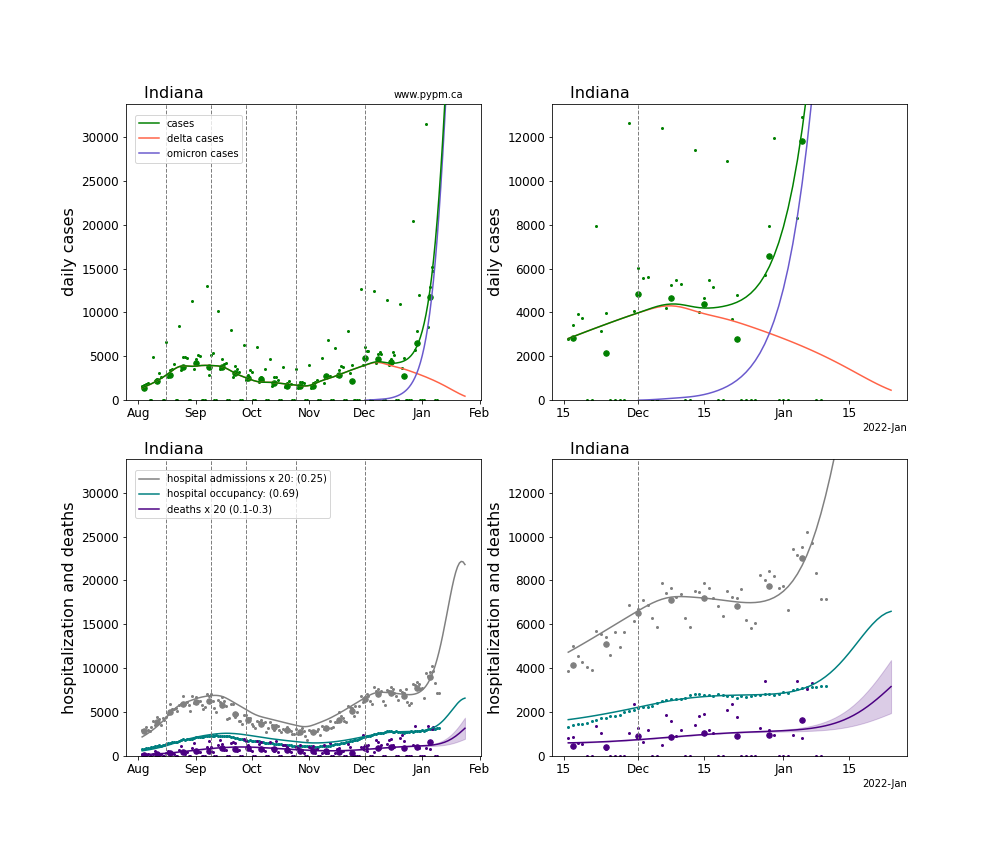
Kansas
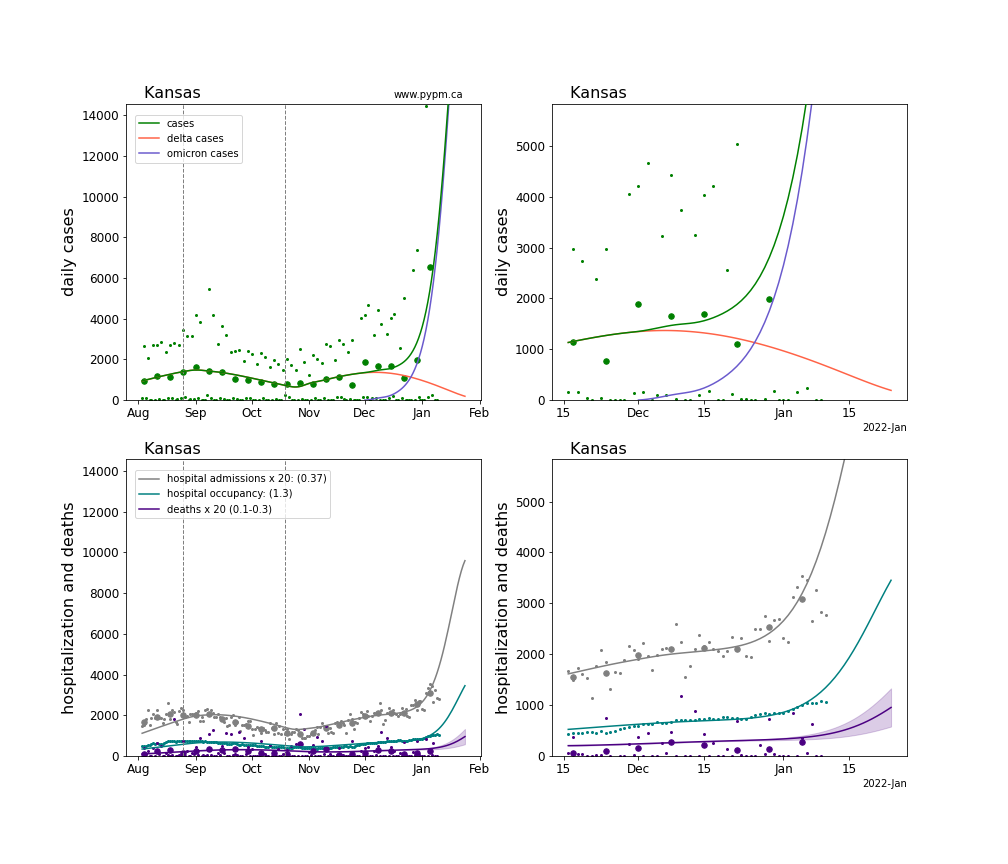
Kentucky
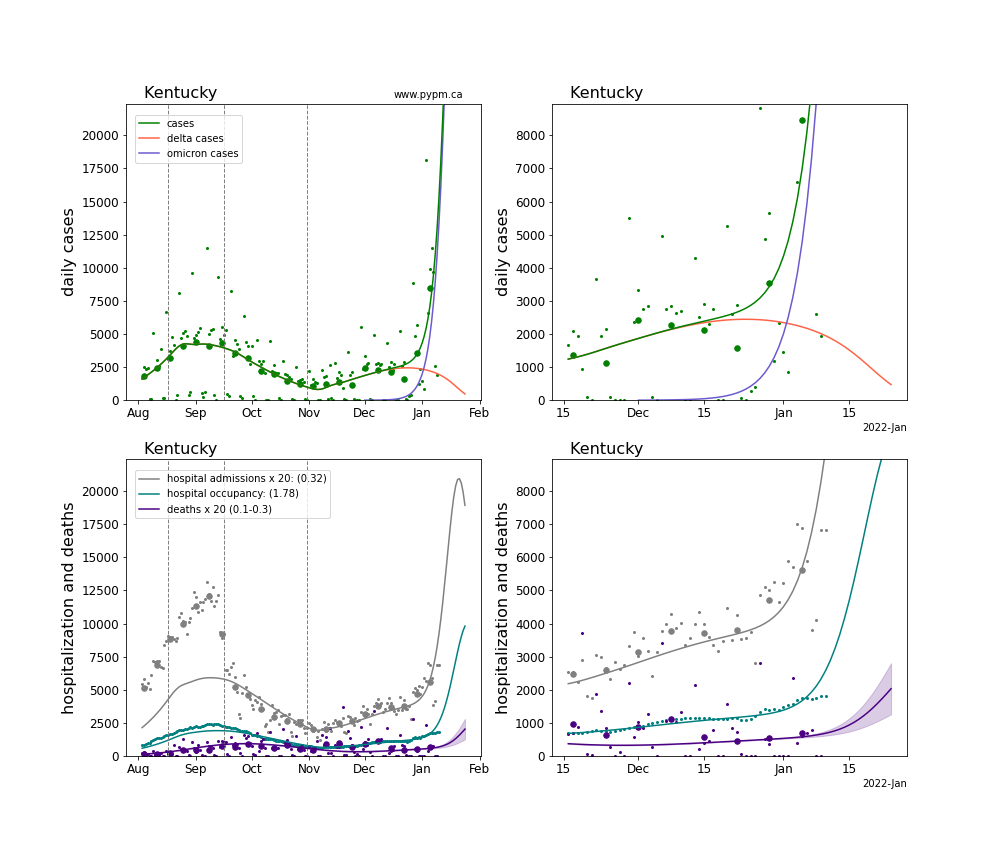
Louisiana
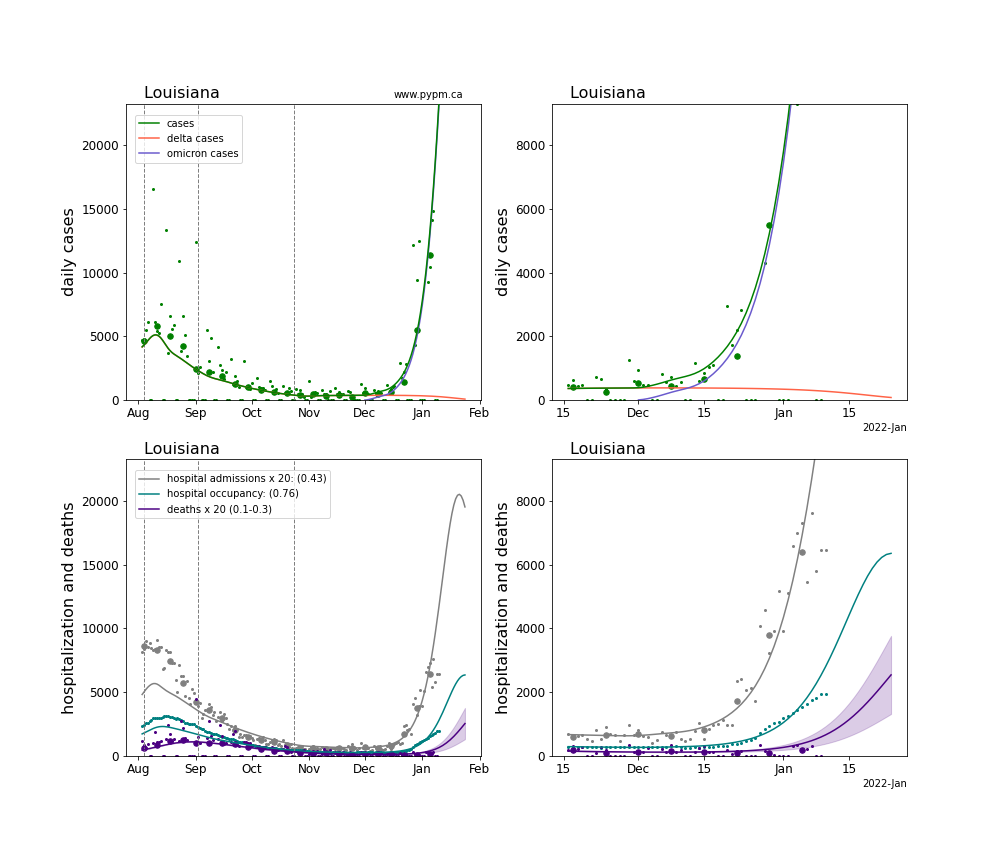
Massachusetts
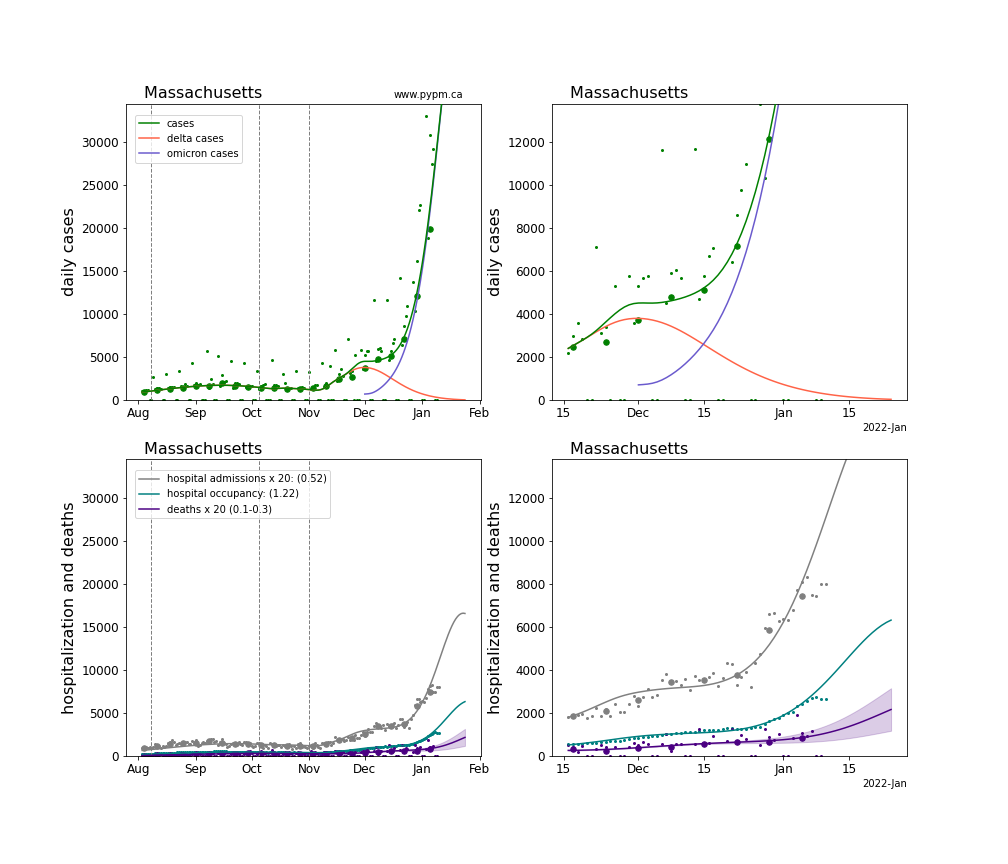
Maryland
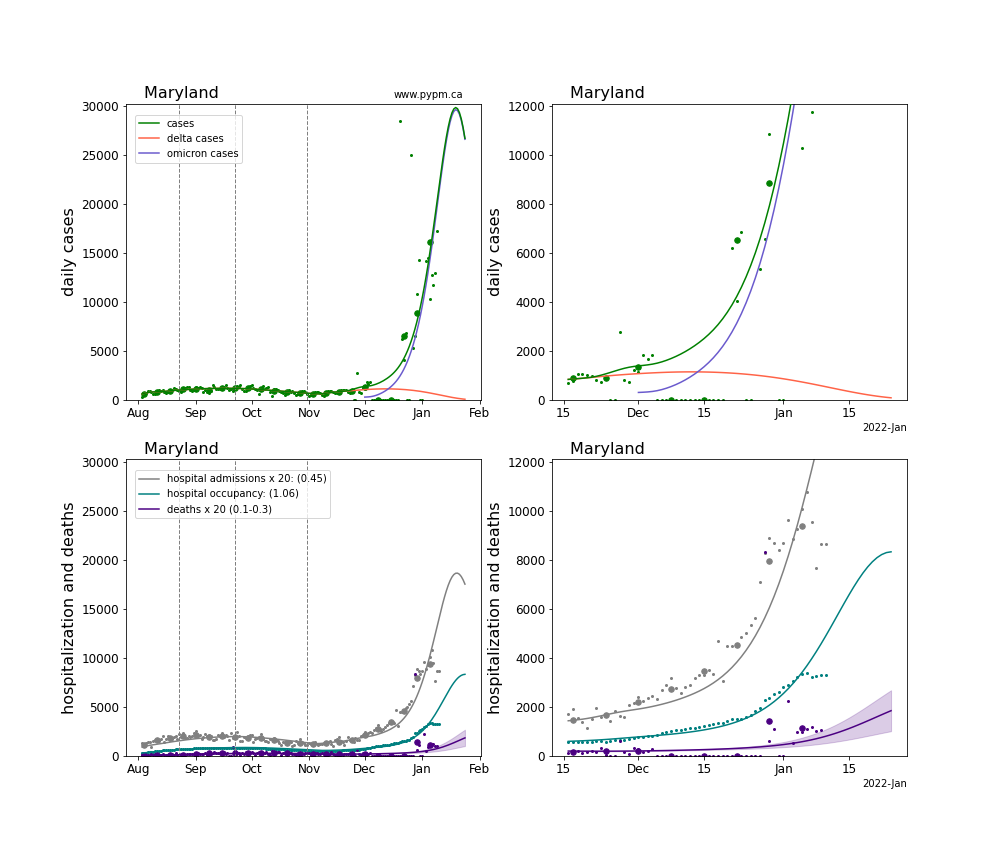
Maine
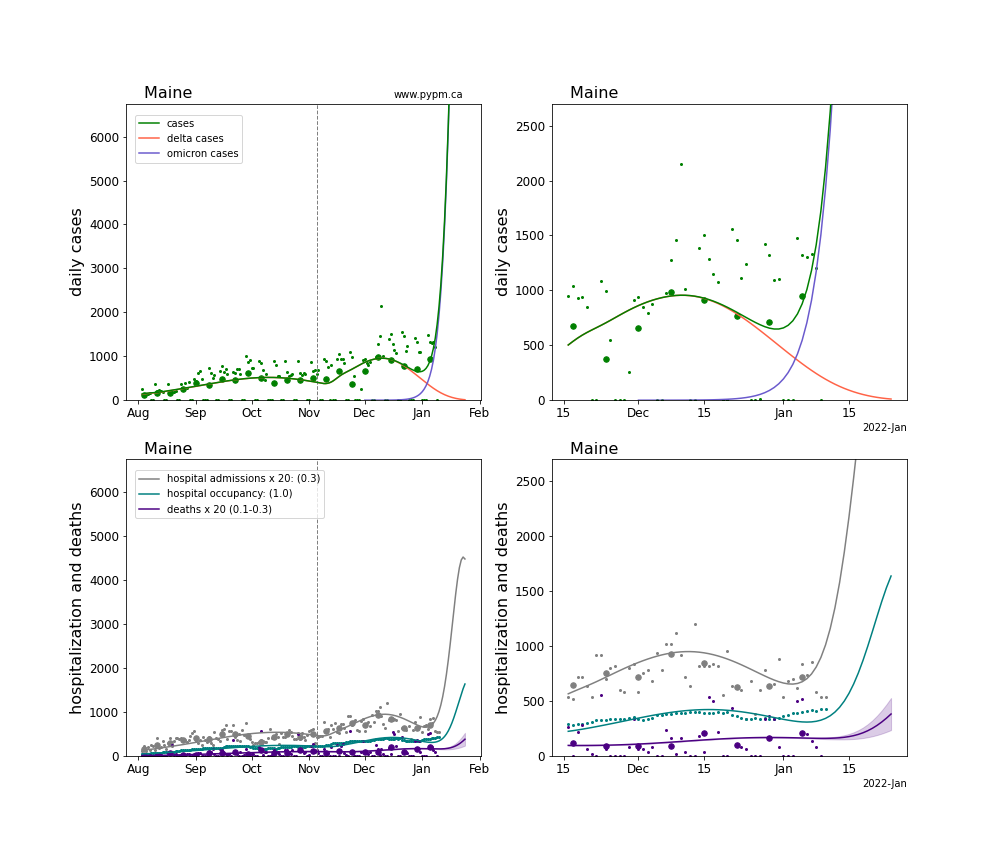
Michigan
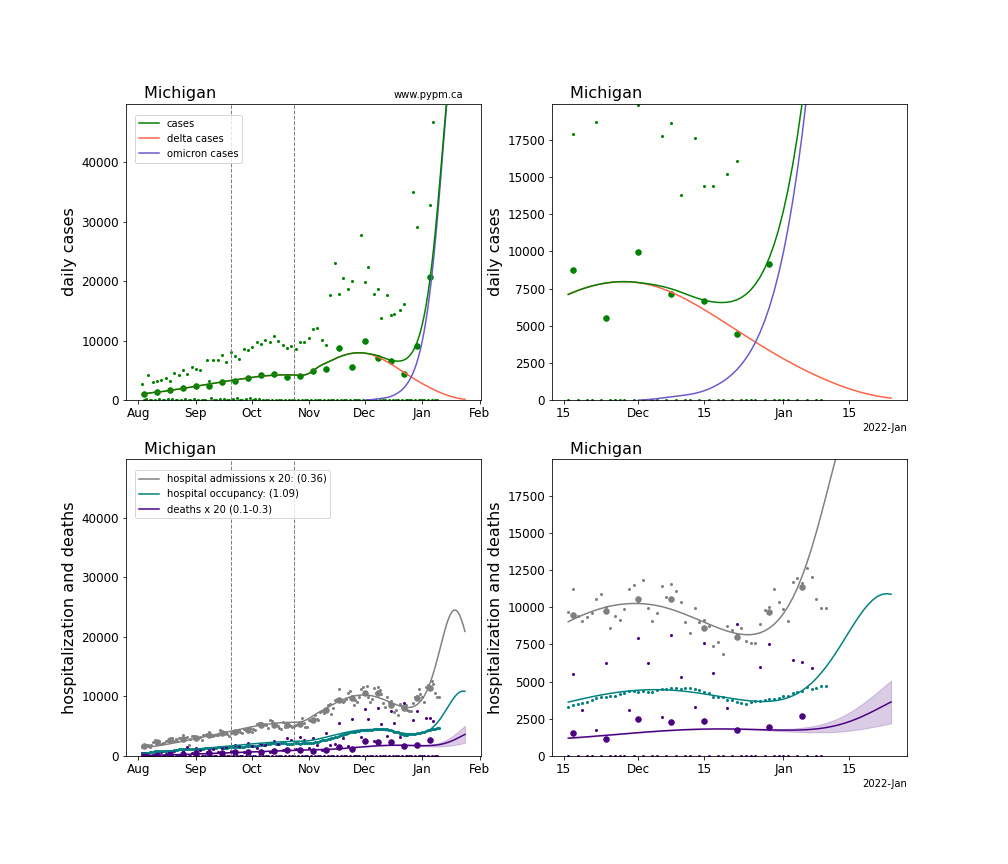
Minnesota
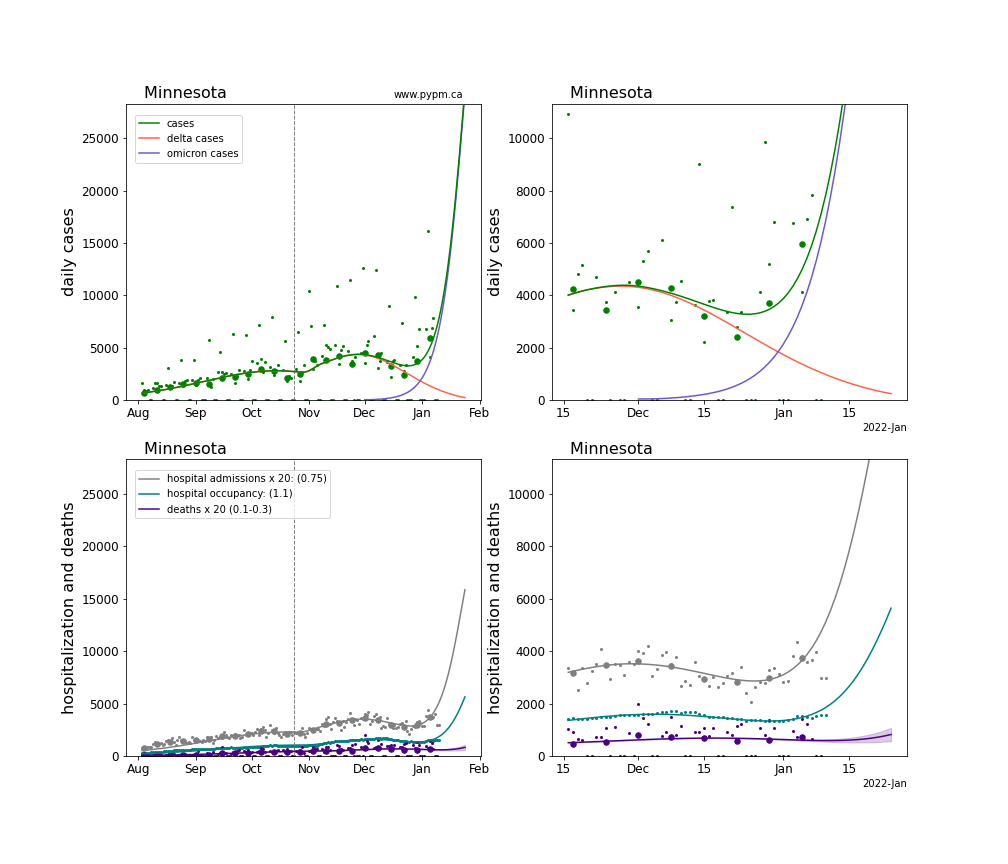
Missouri
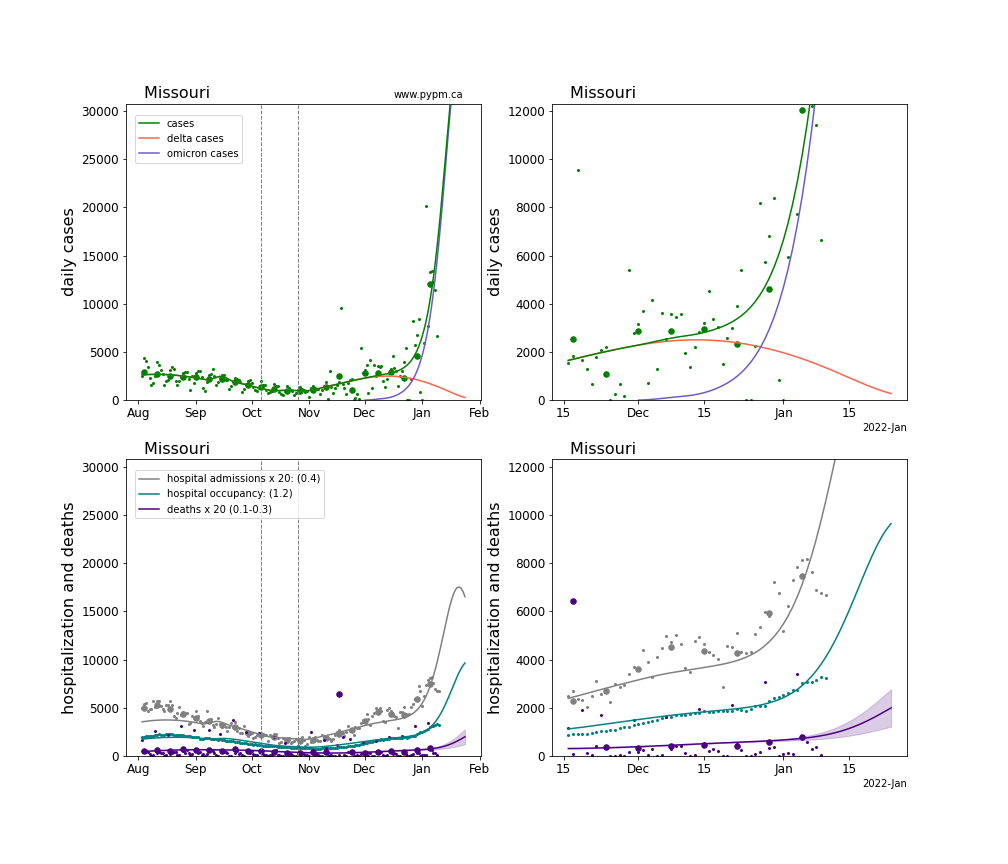
Mississippi
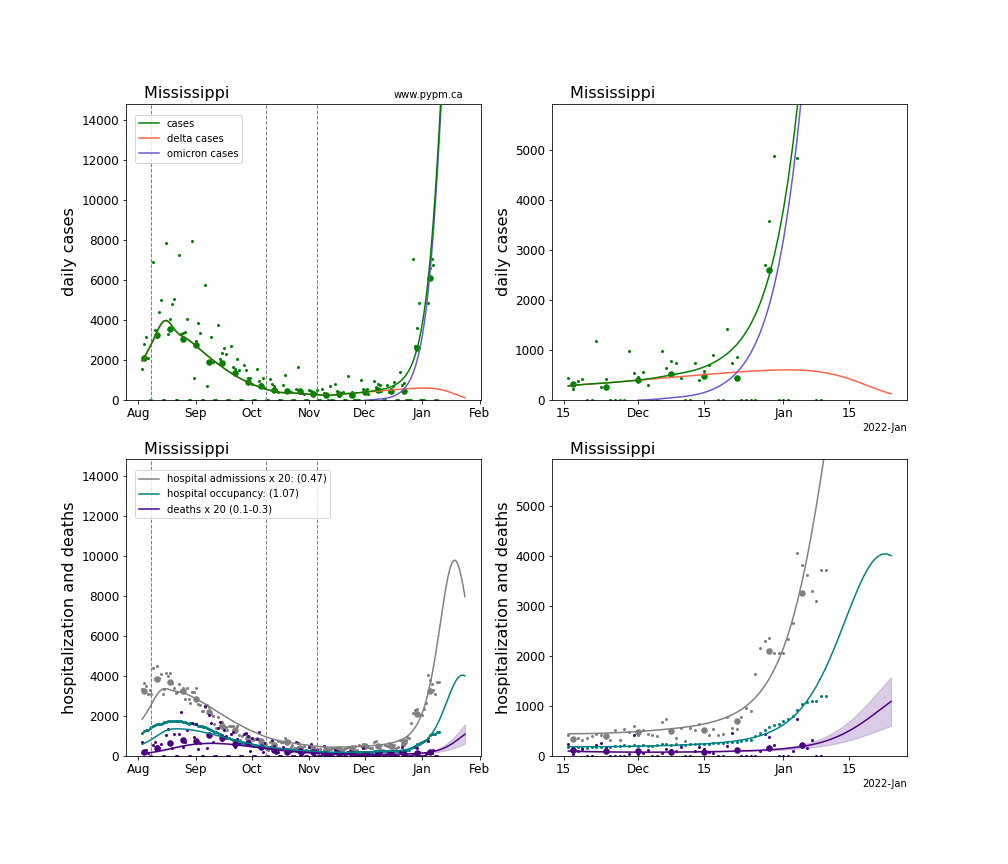
Montana
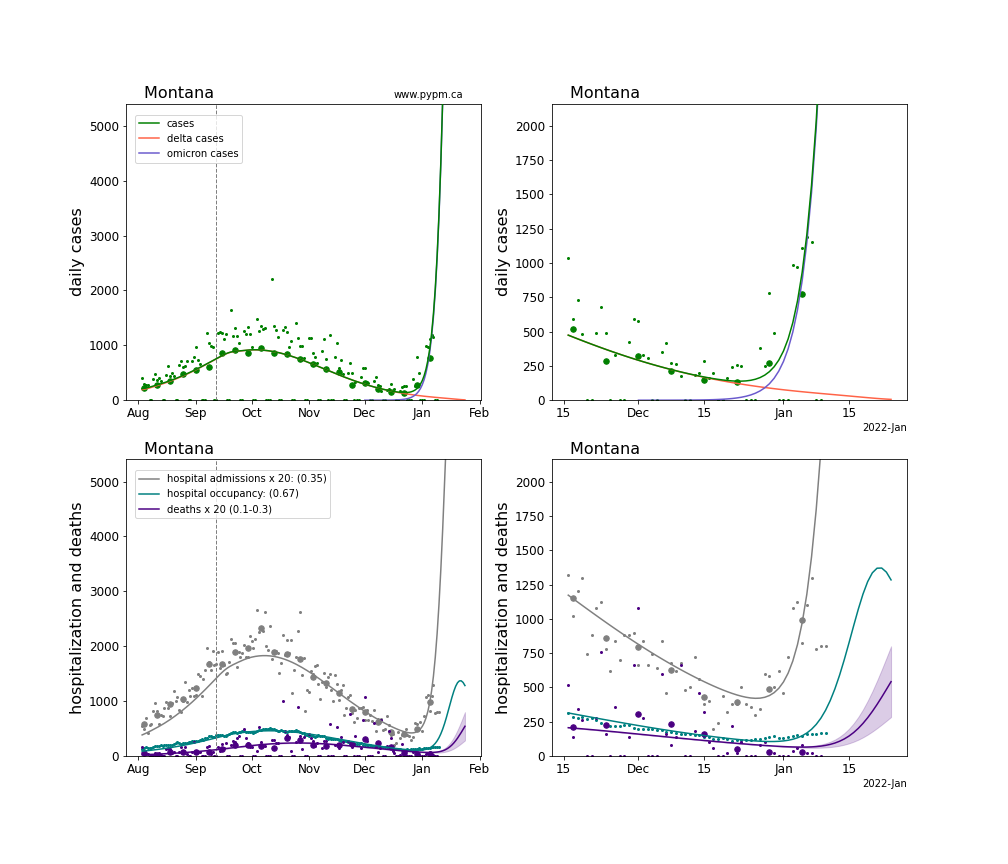
North Carolina
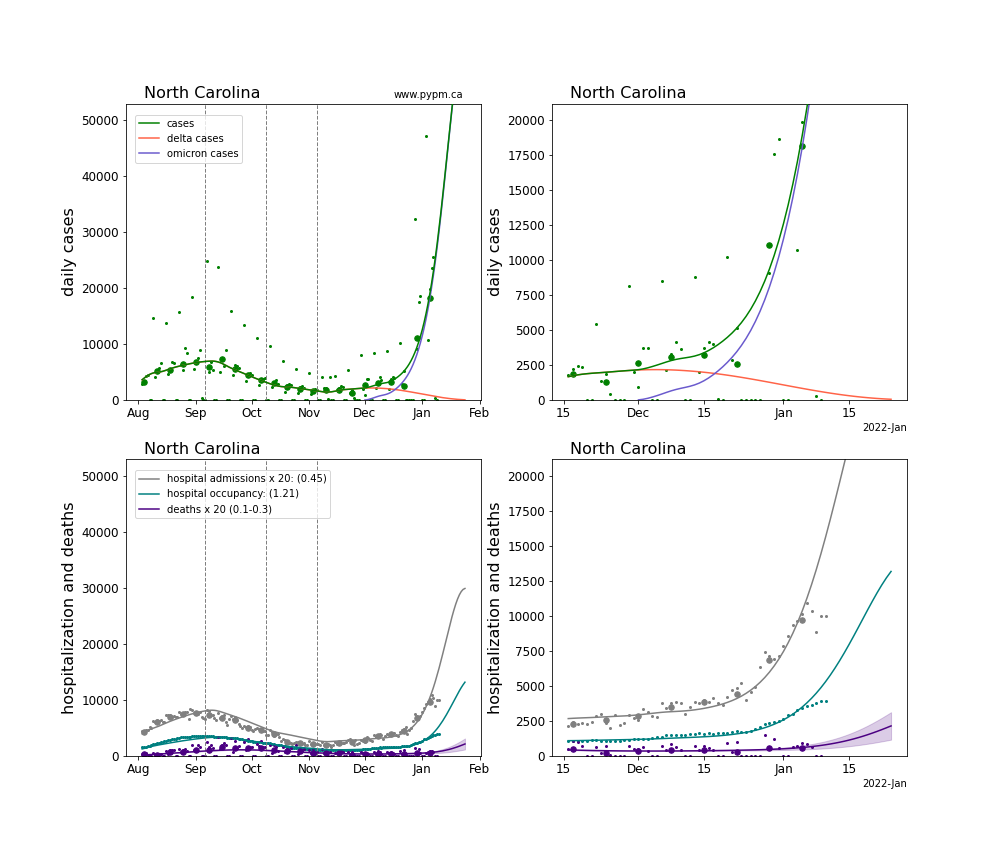
North Dakota
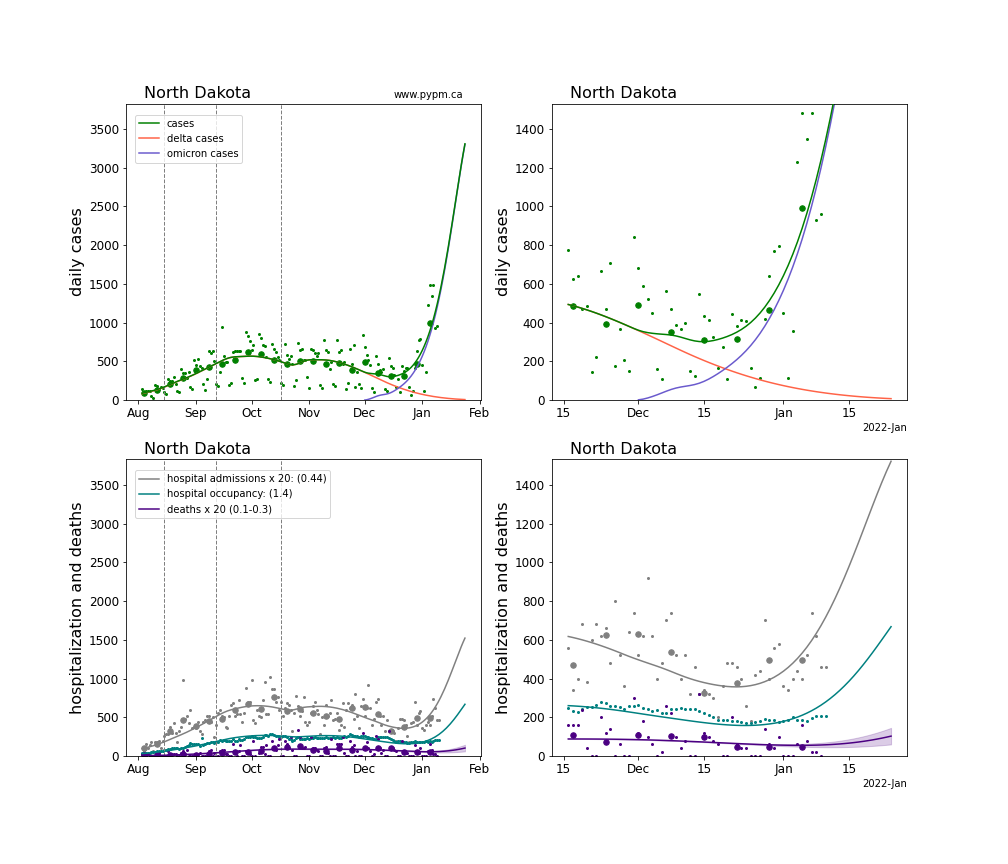
Nebraska
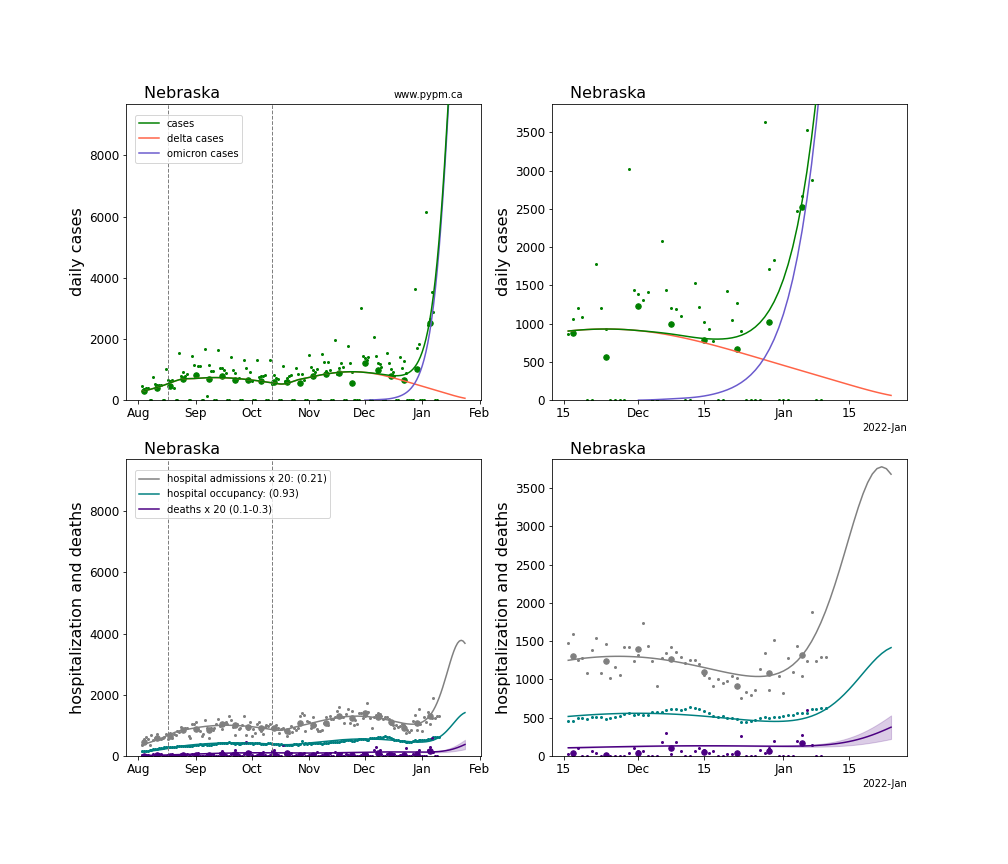
New Hampshire
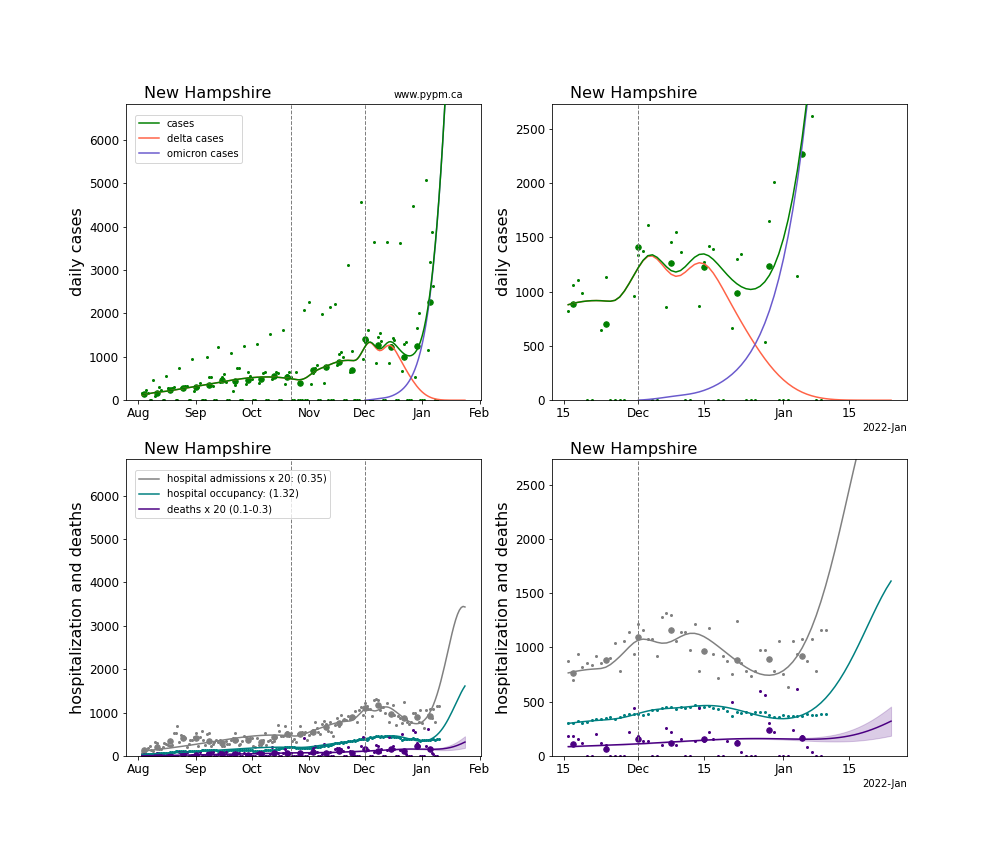
New Jersey
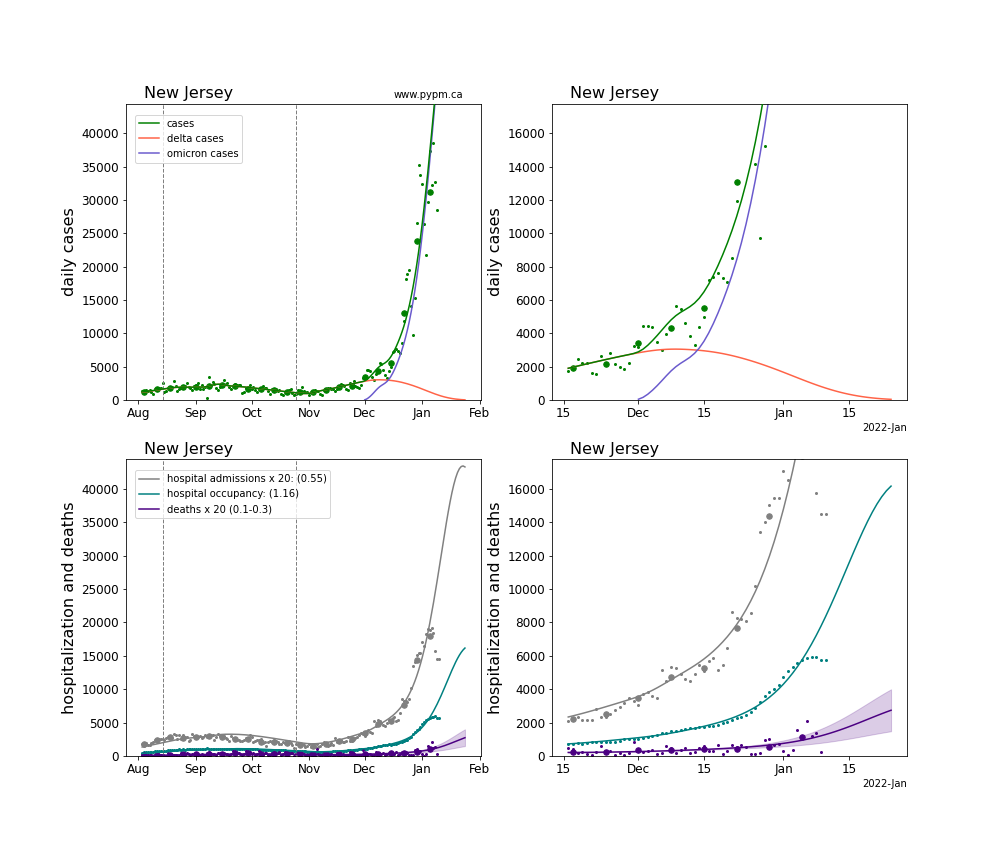
New Mexico
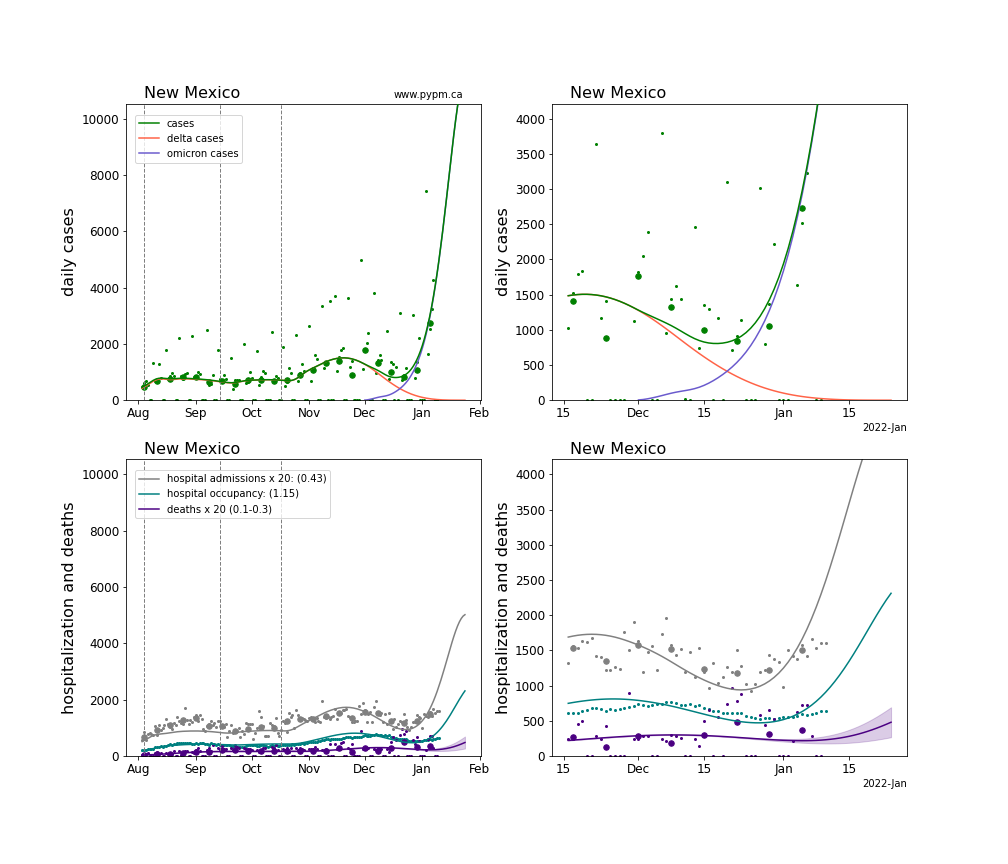
Nevada
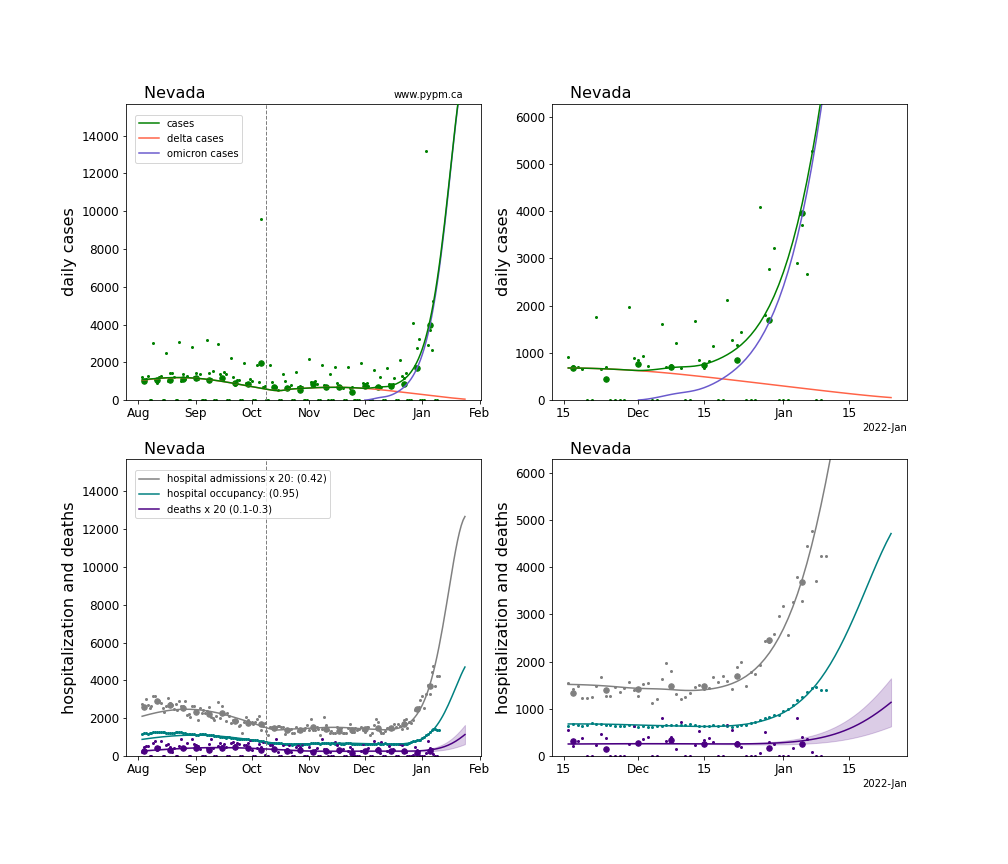
New York
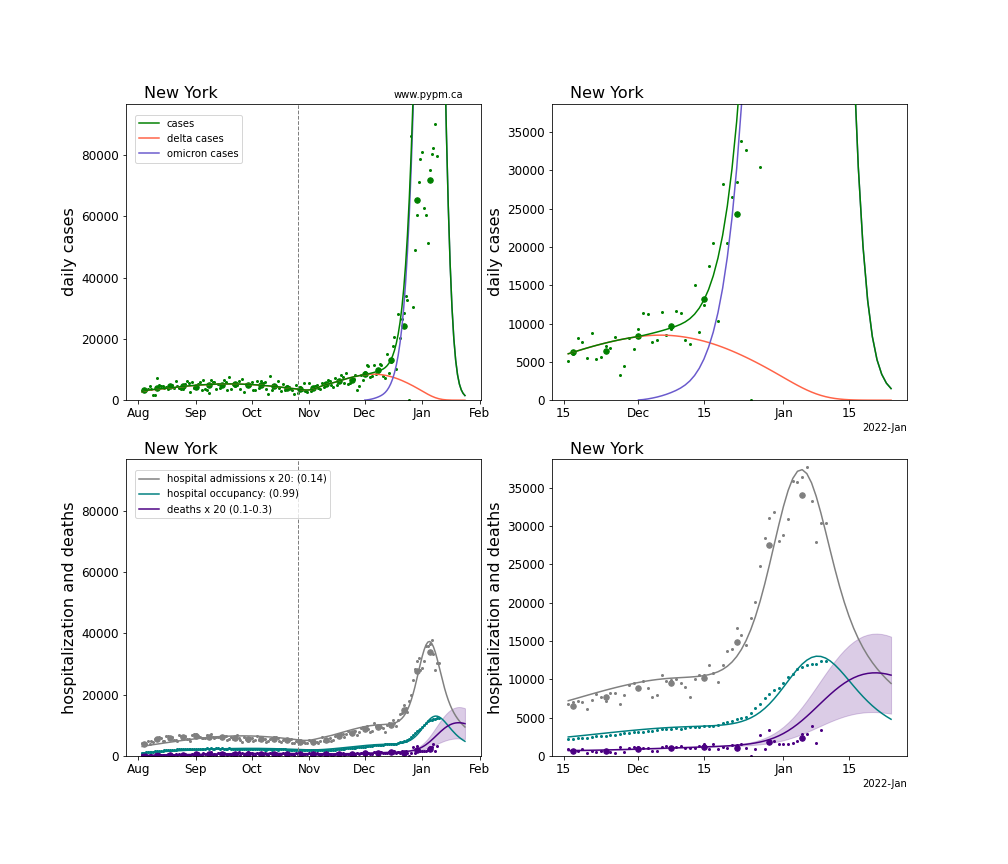
Ohio
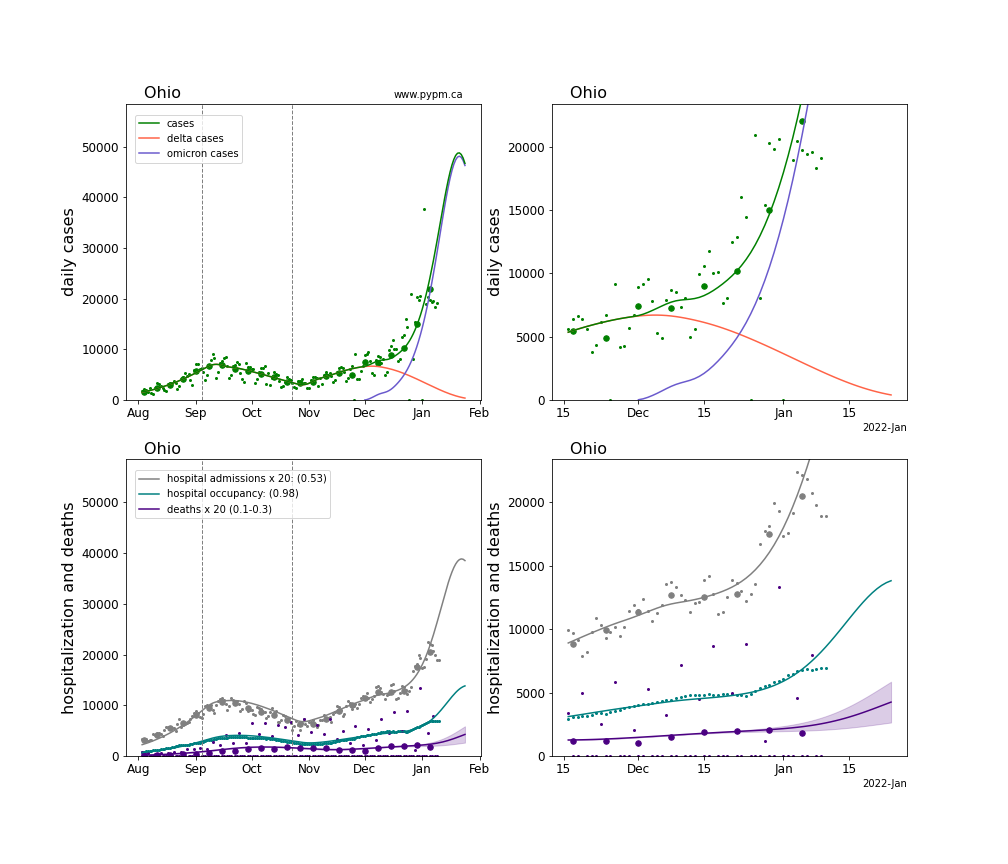
Oklahoma
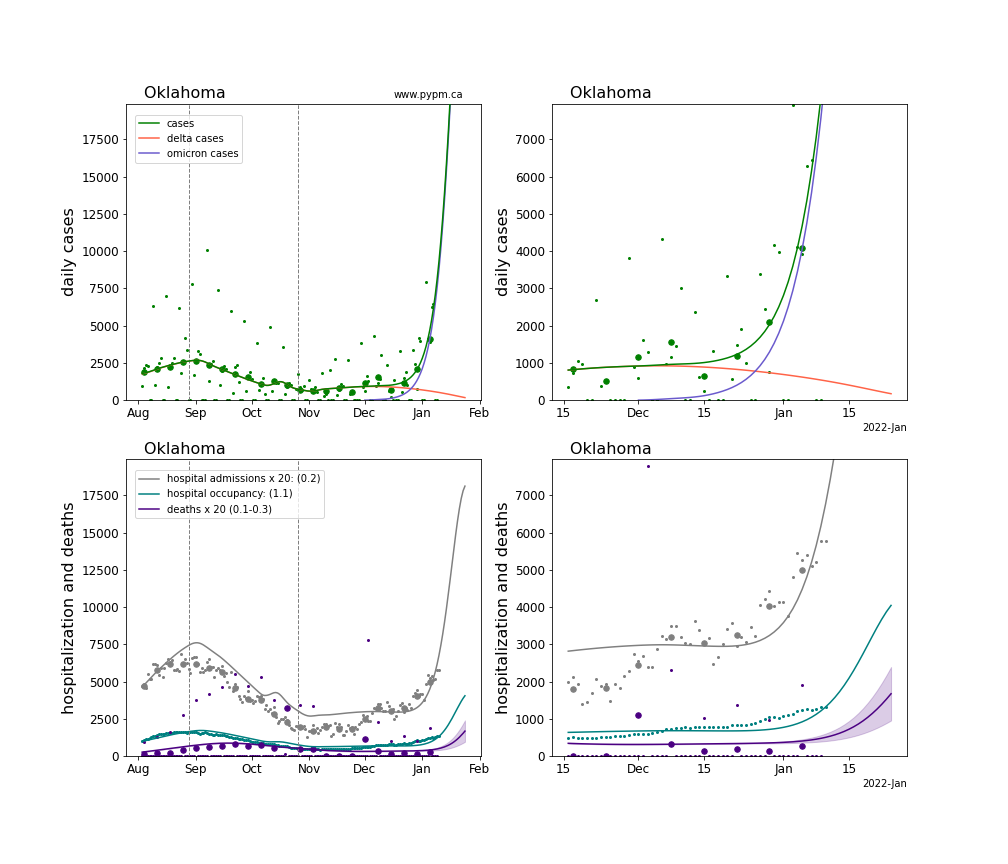
Oregon
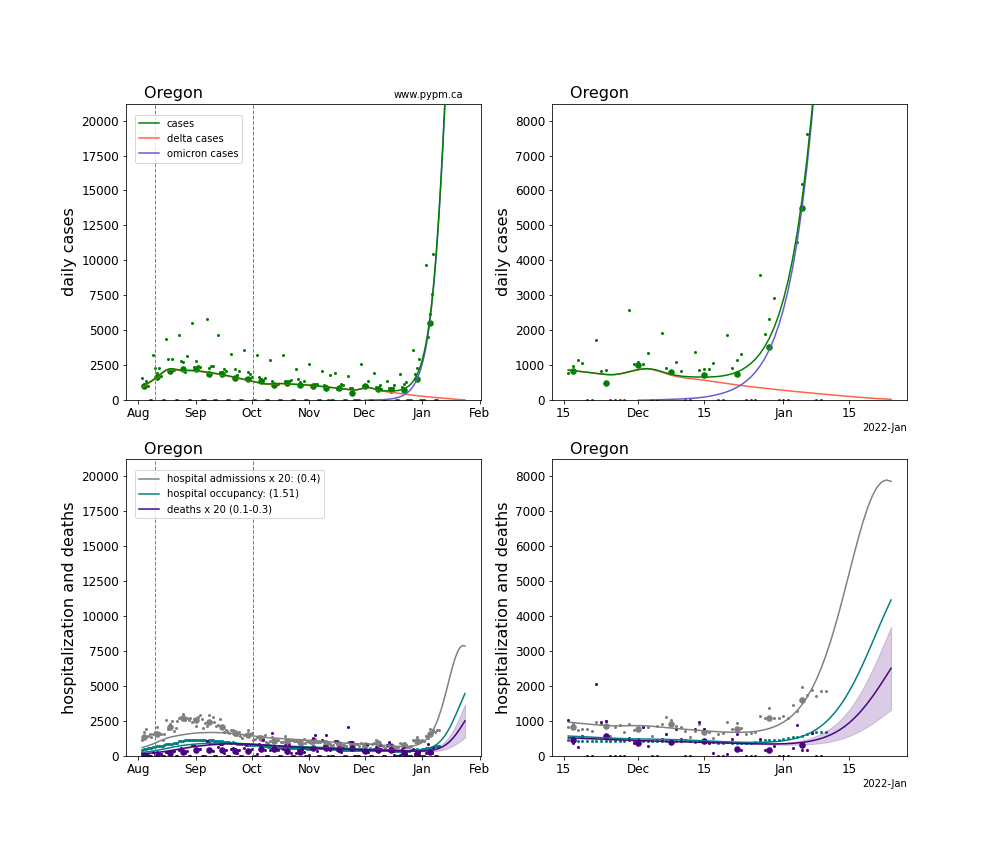
Pennsylvania
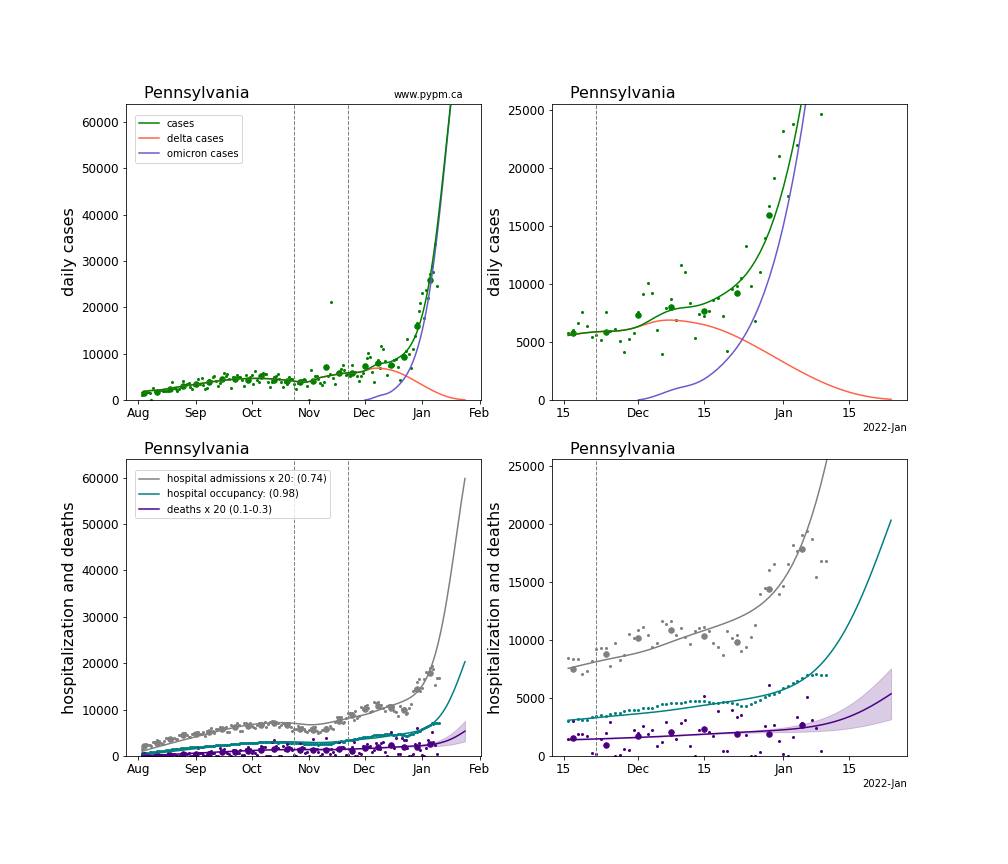
Puerto Rico
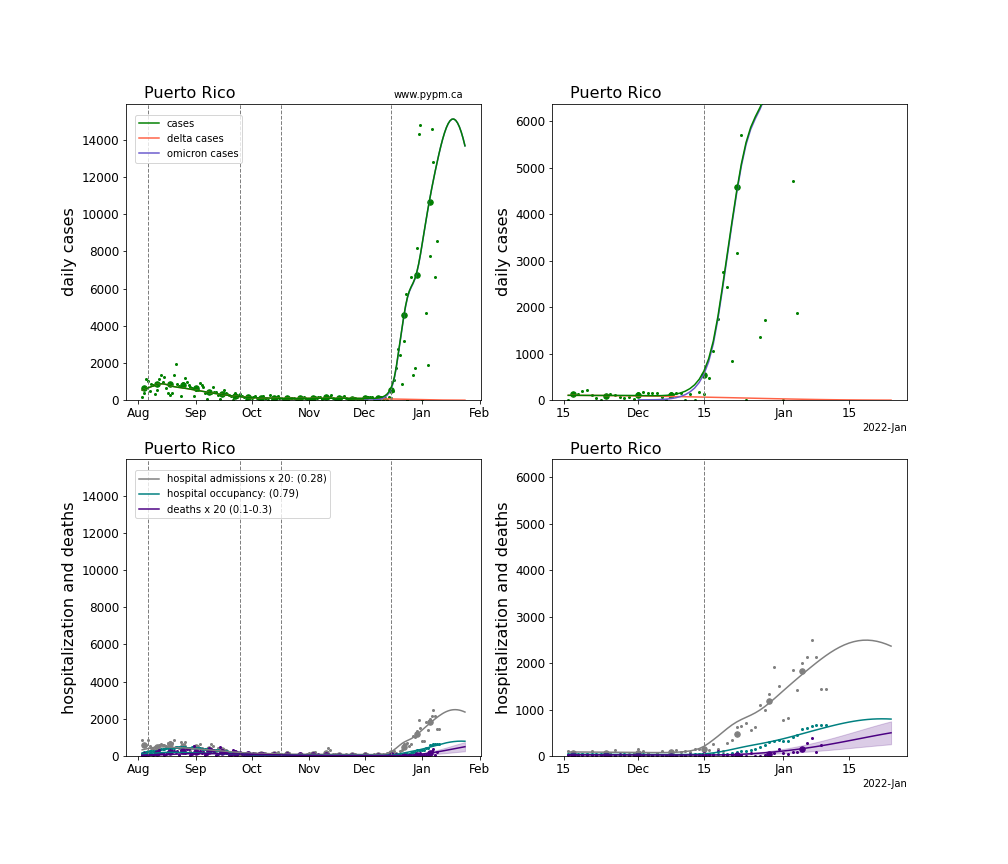
Rhode Island
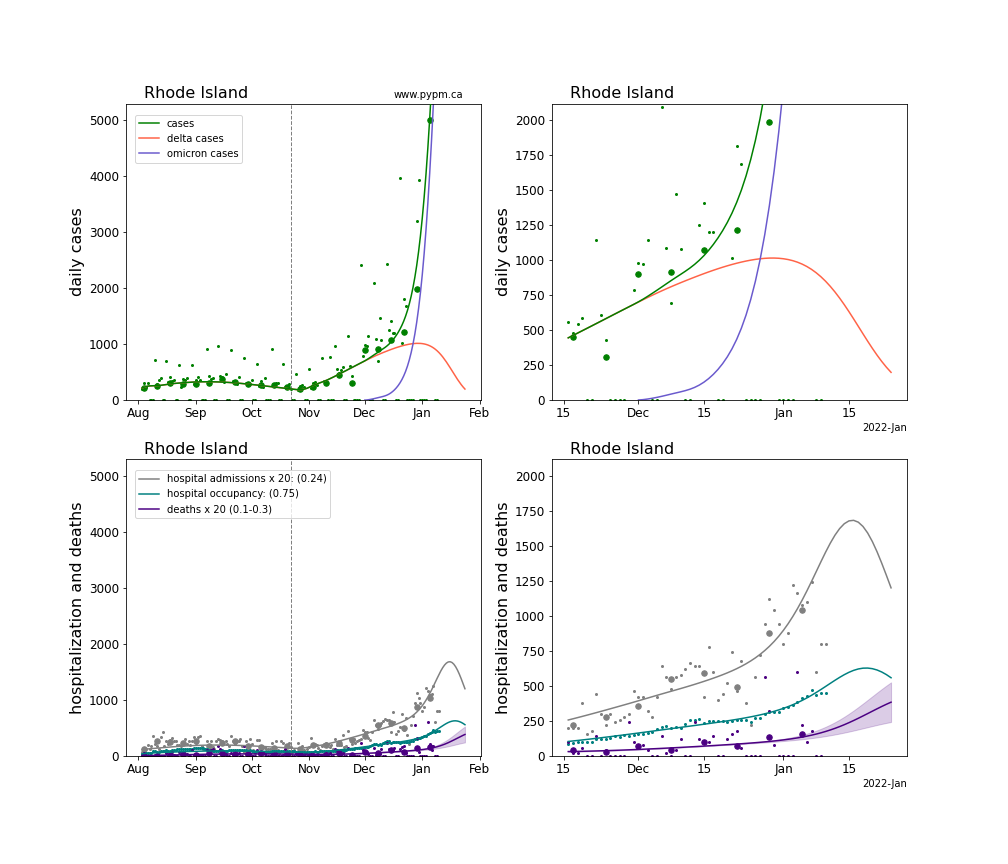
South Carolina
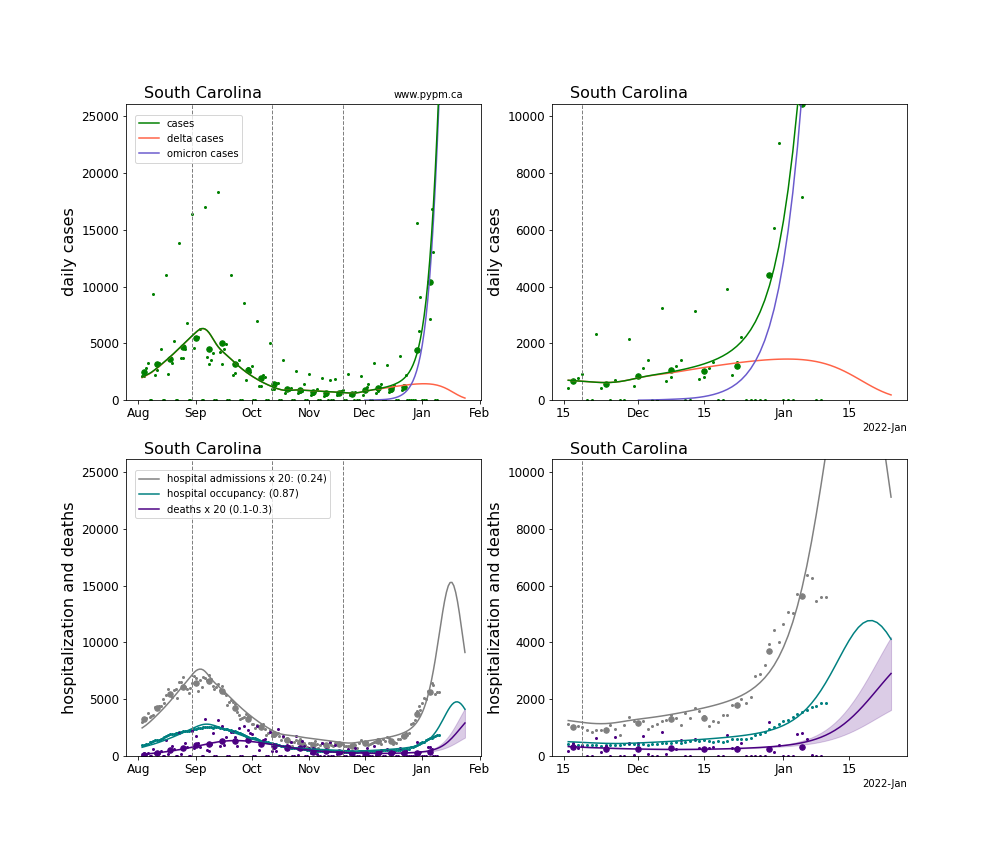
South Dakota
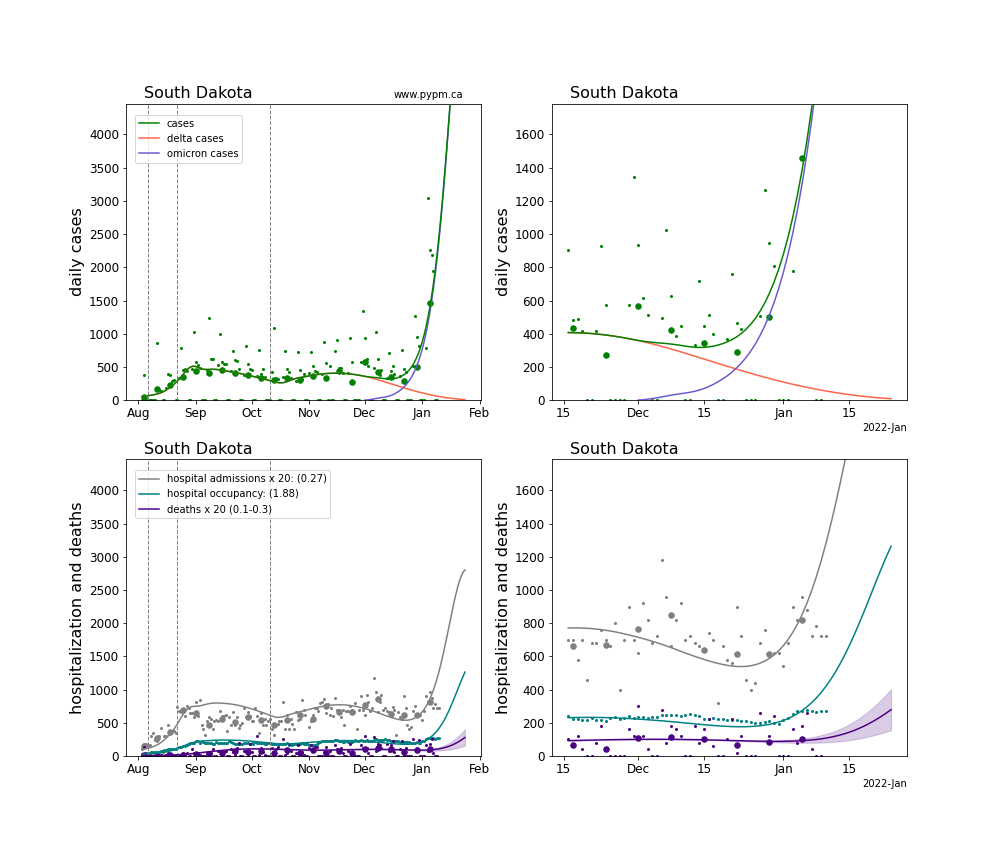
Tennessee
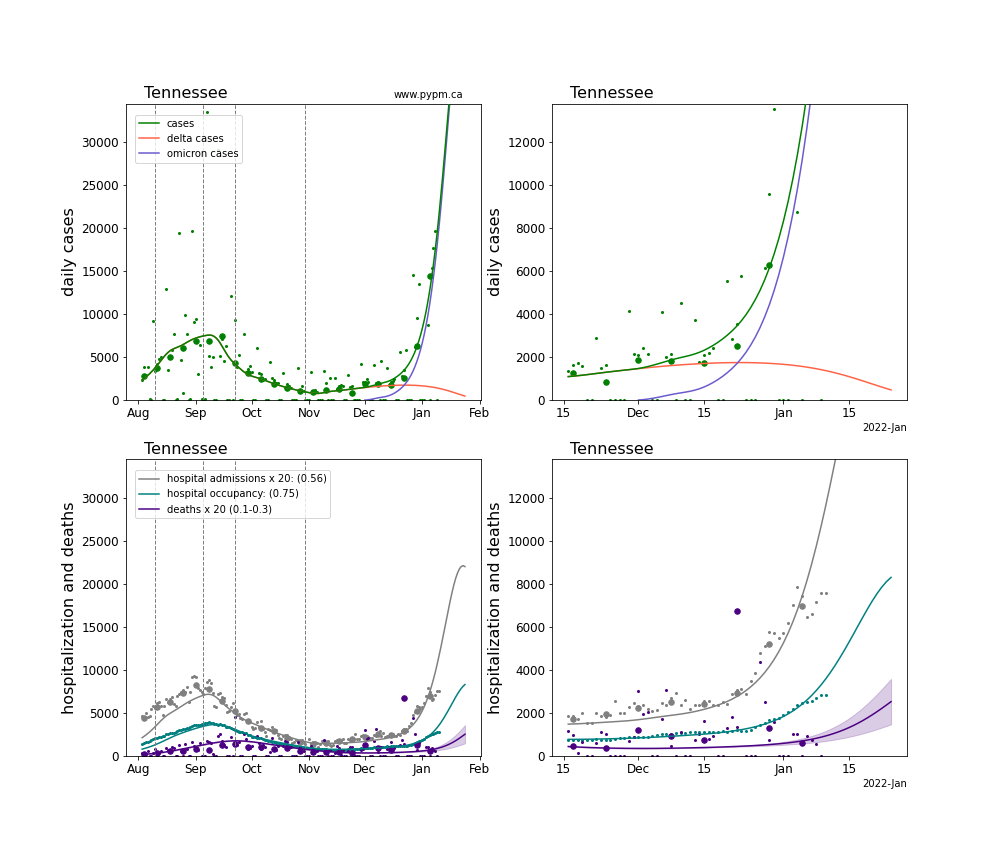
Texas
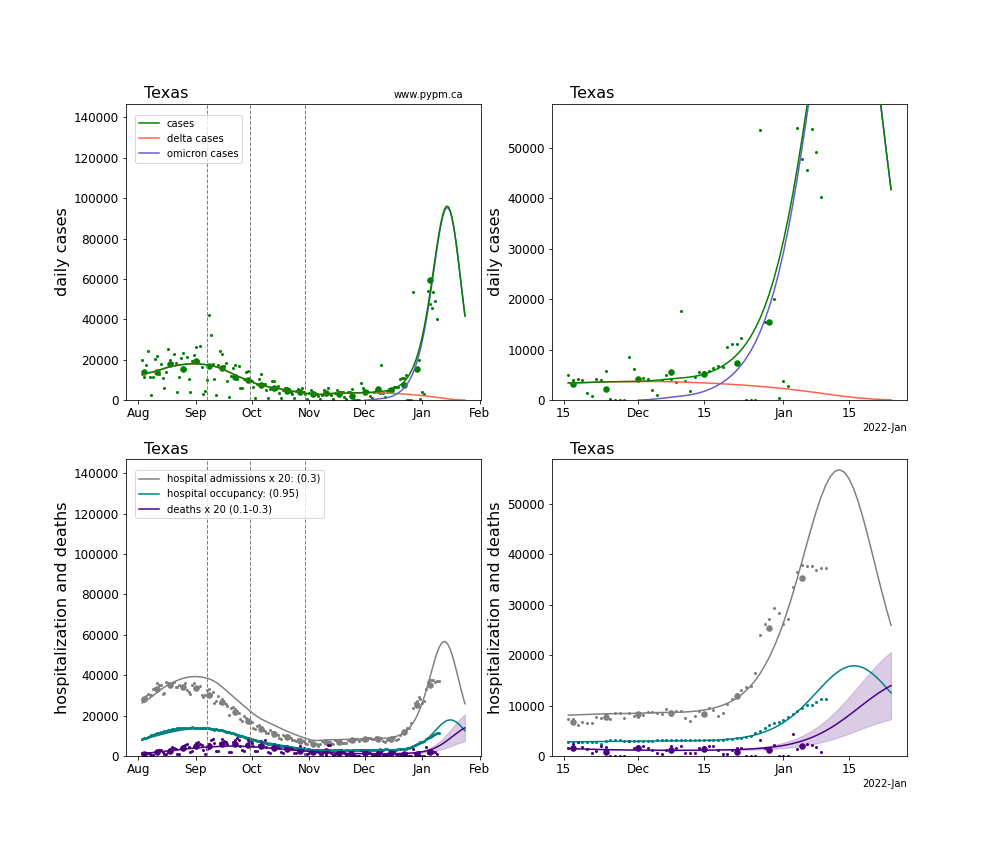
Utah
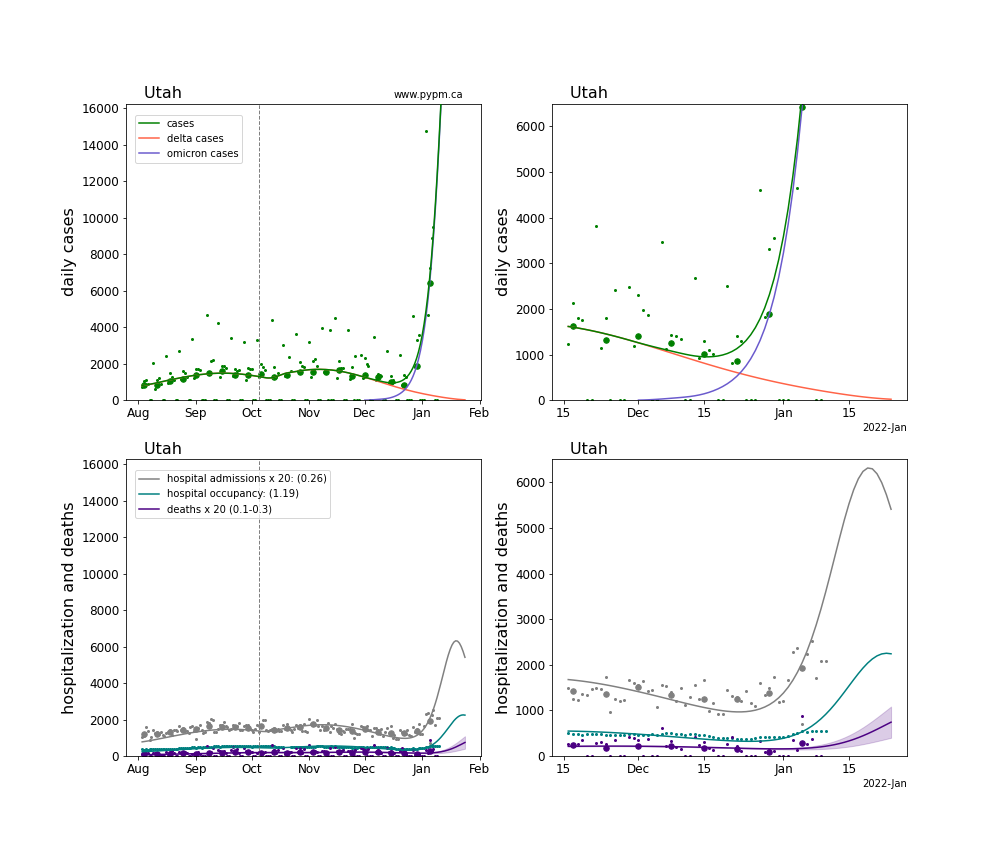
Virginia
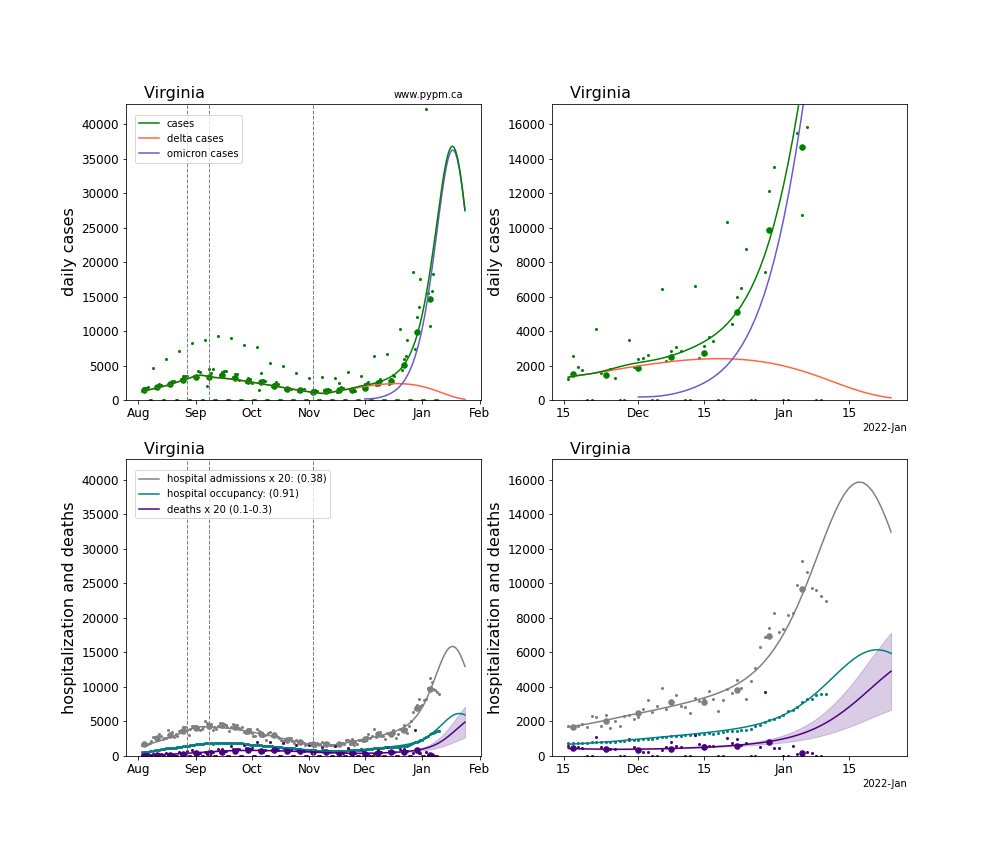
Vermont
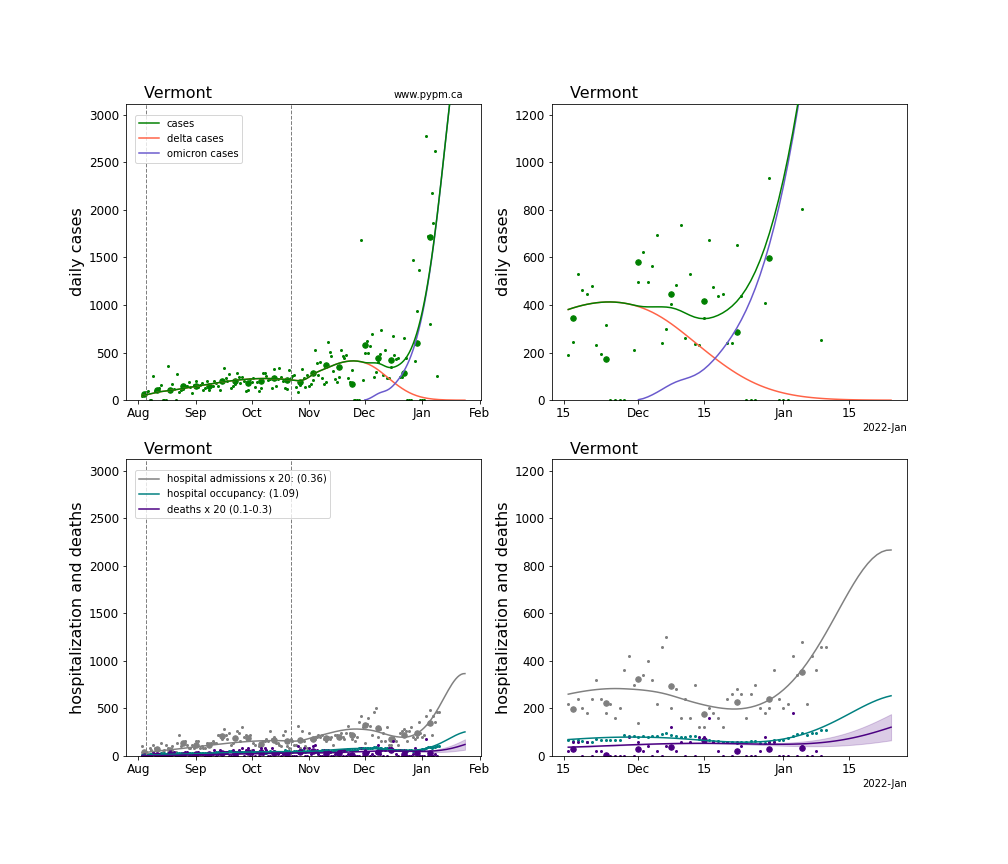
Washington
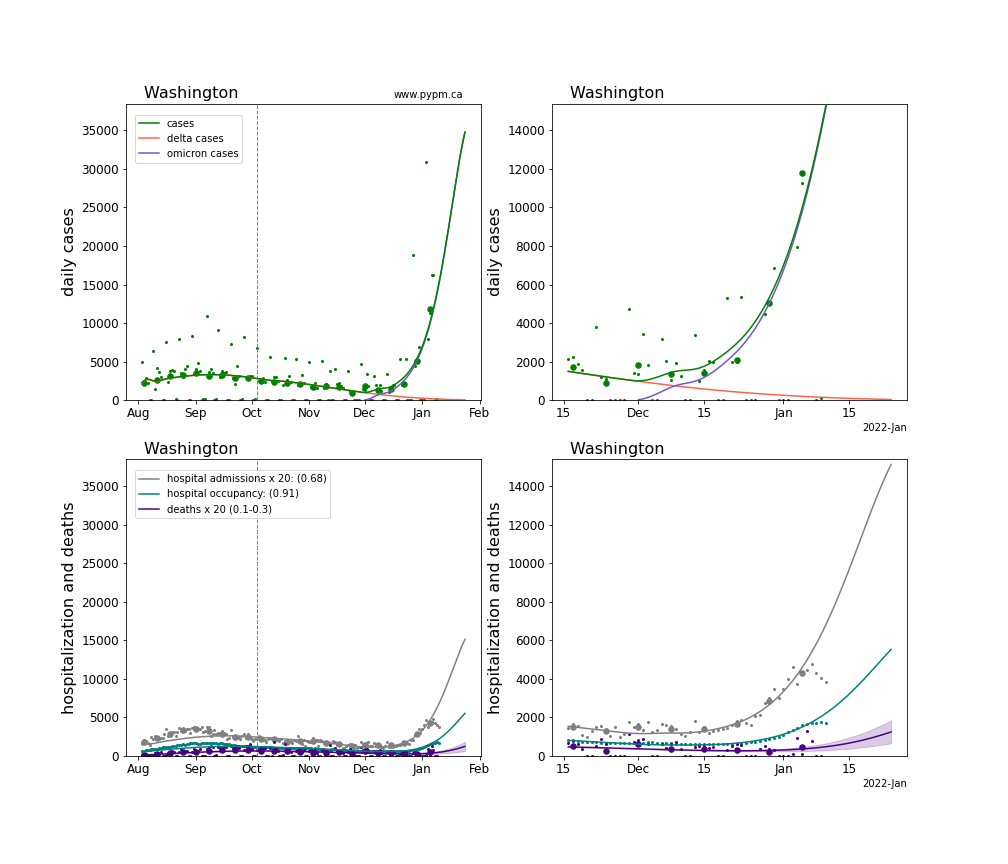
Wisconsin
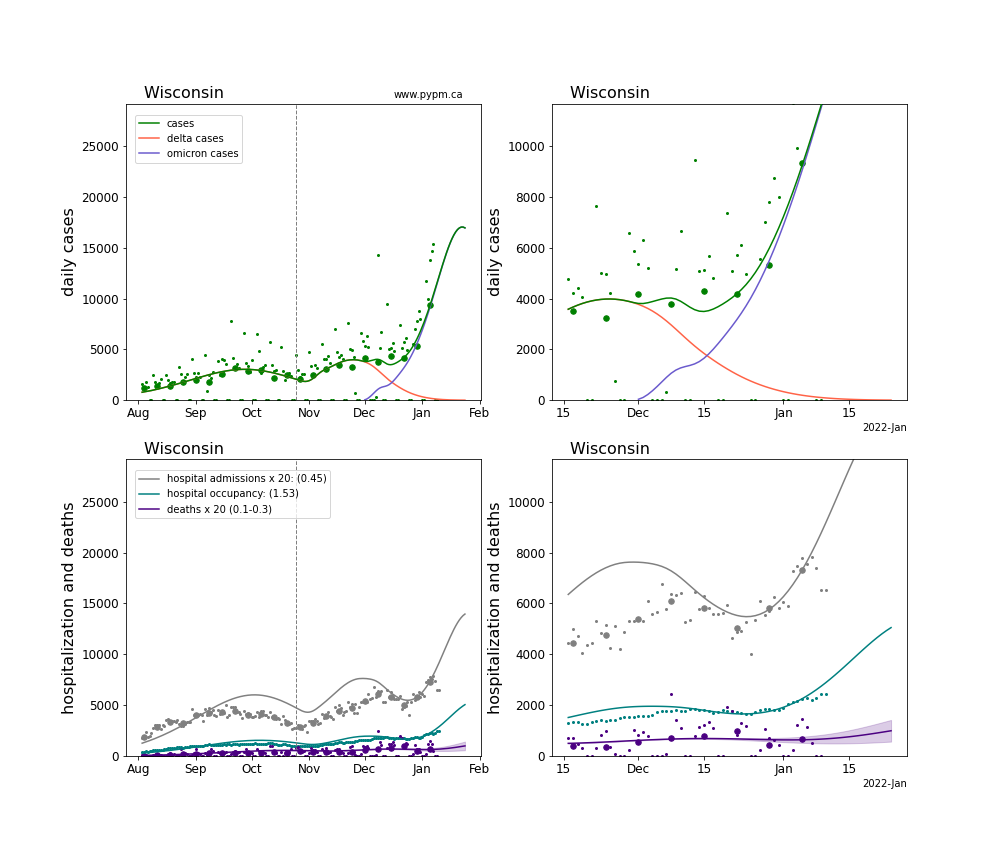
West Virginia
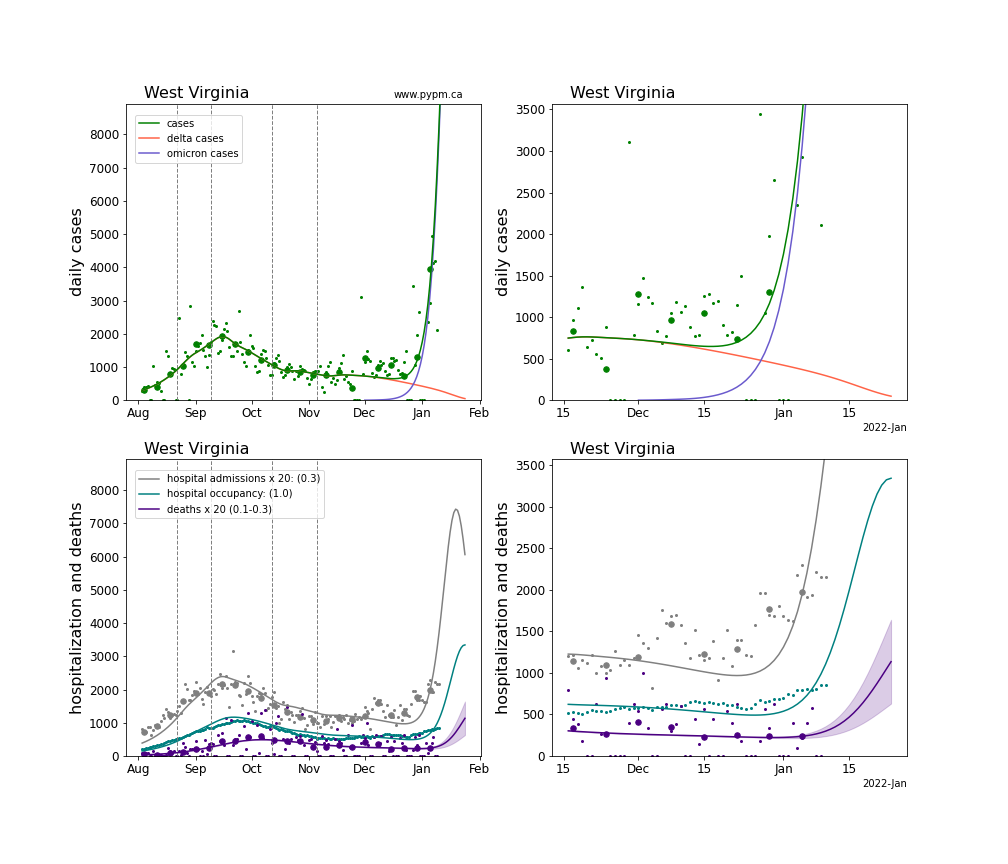
Wyoming
